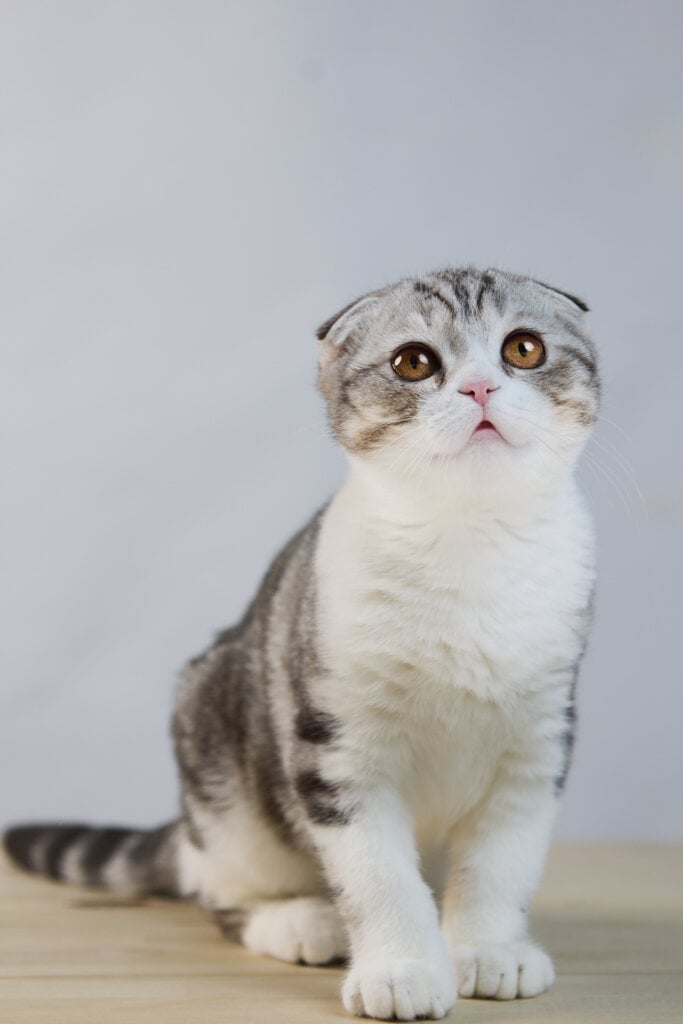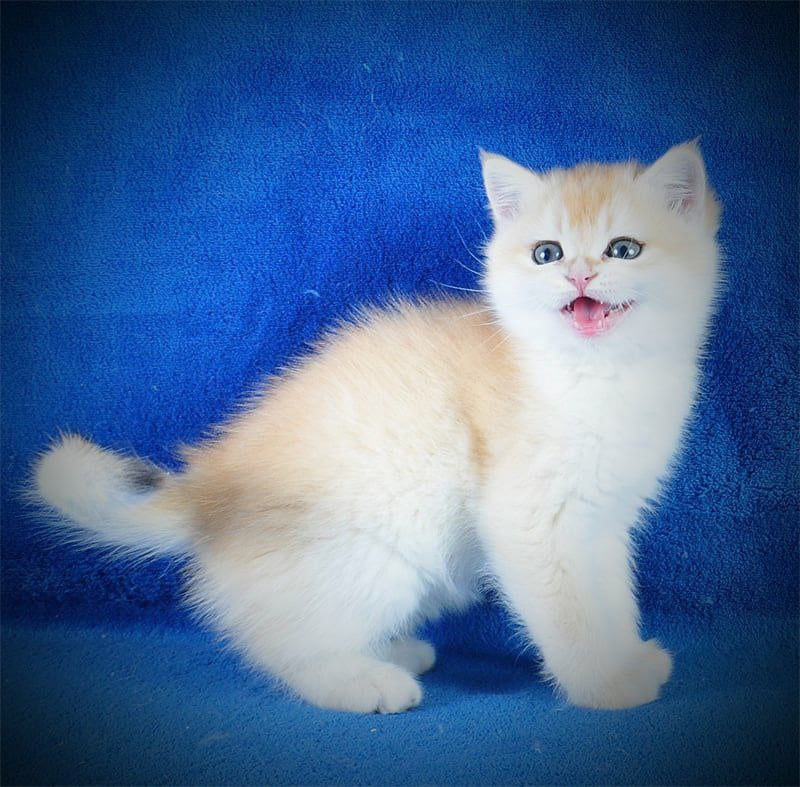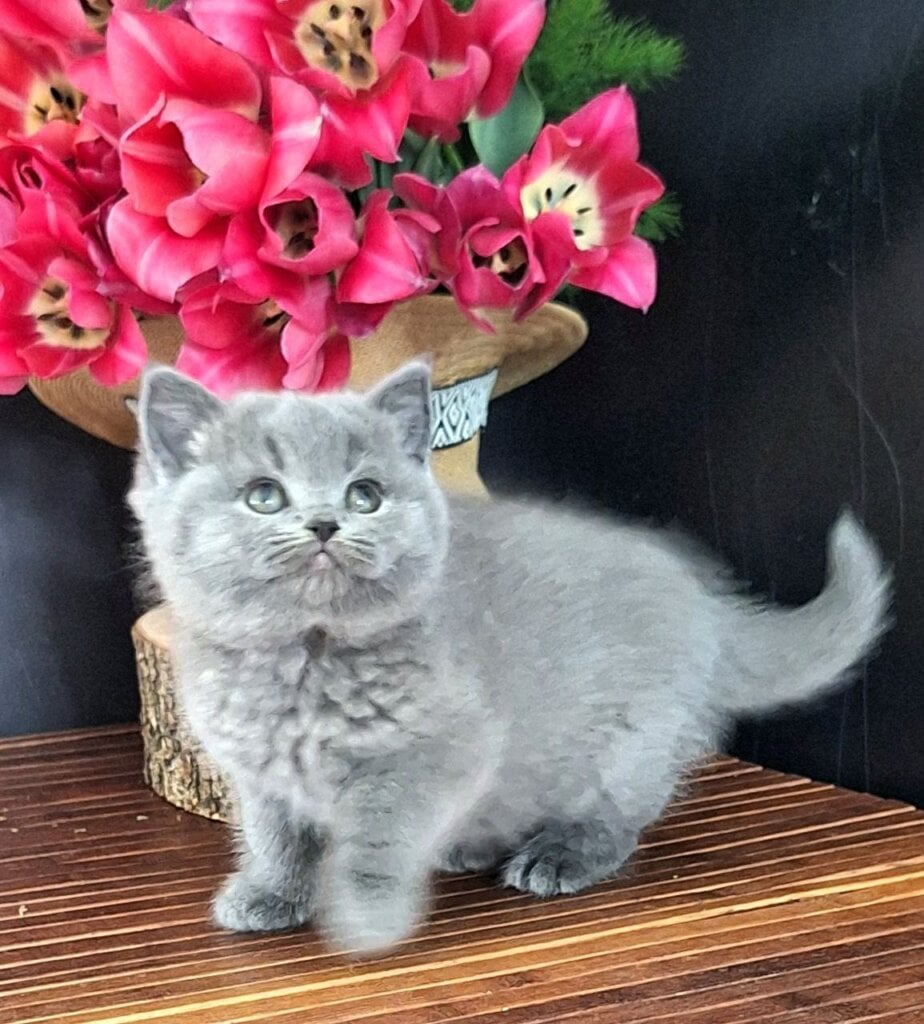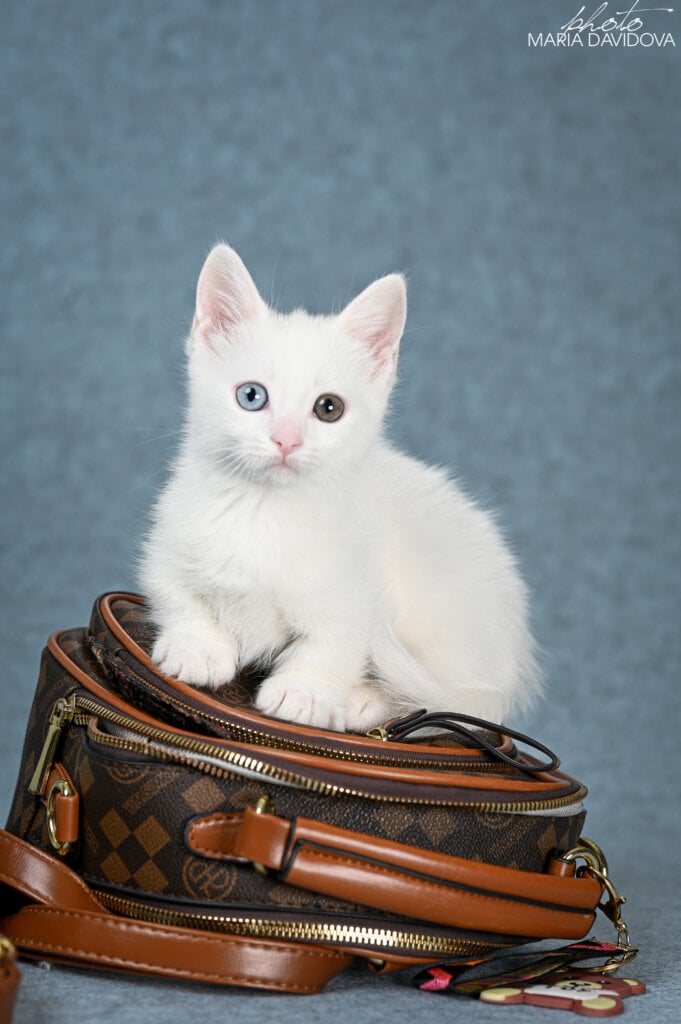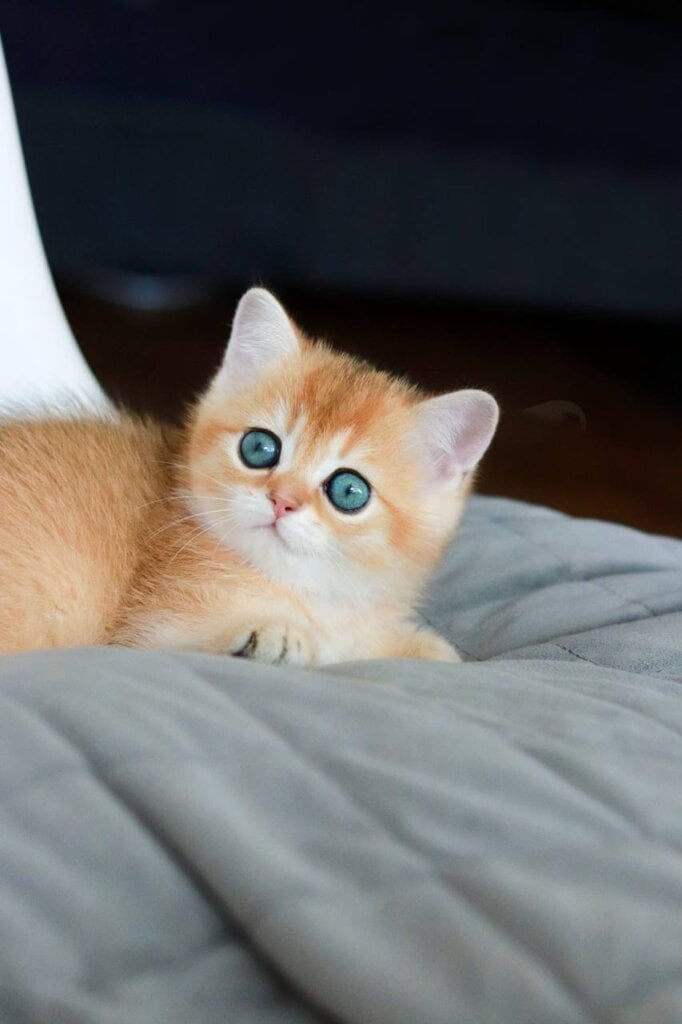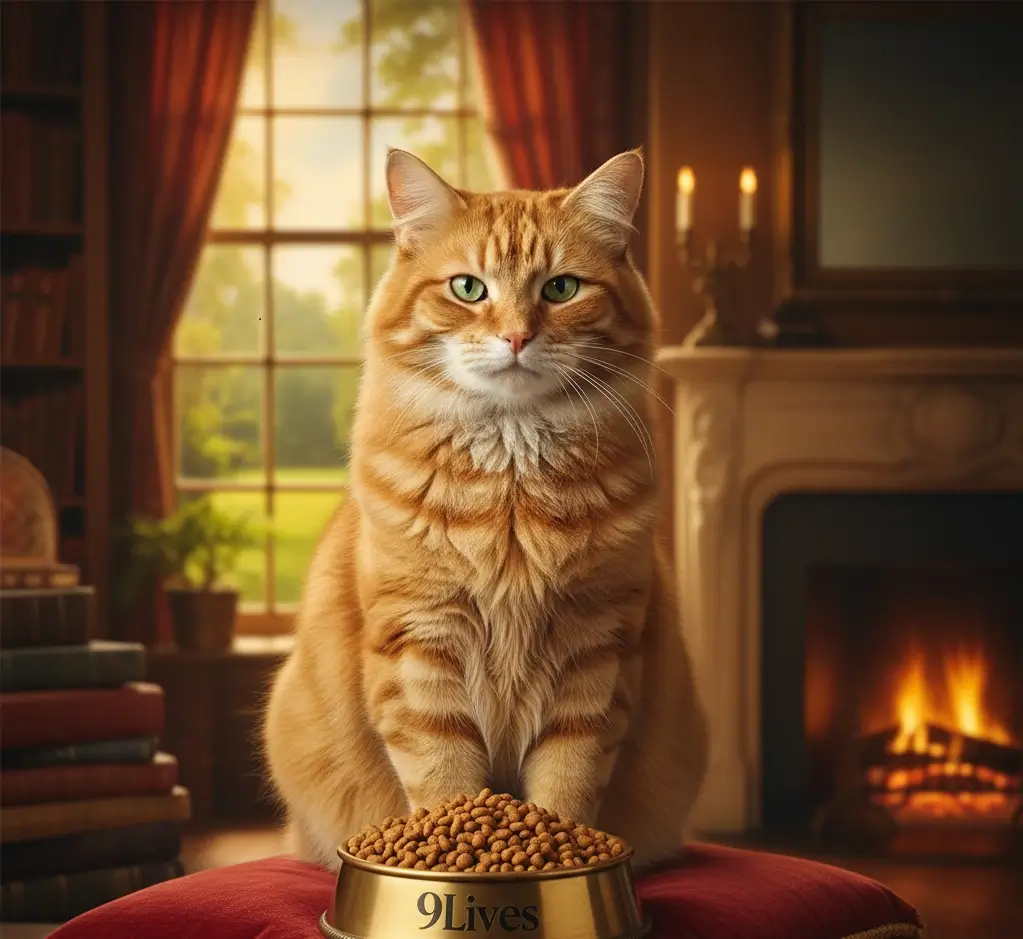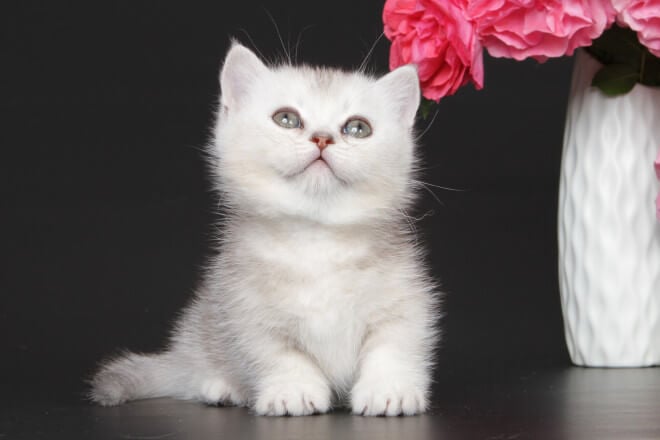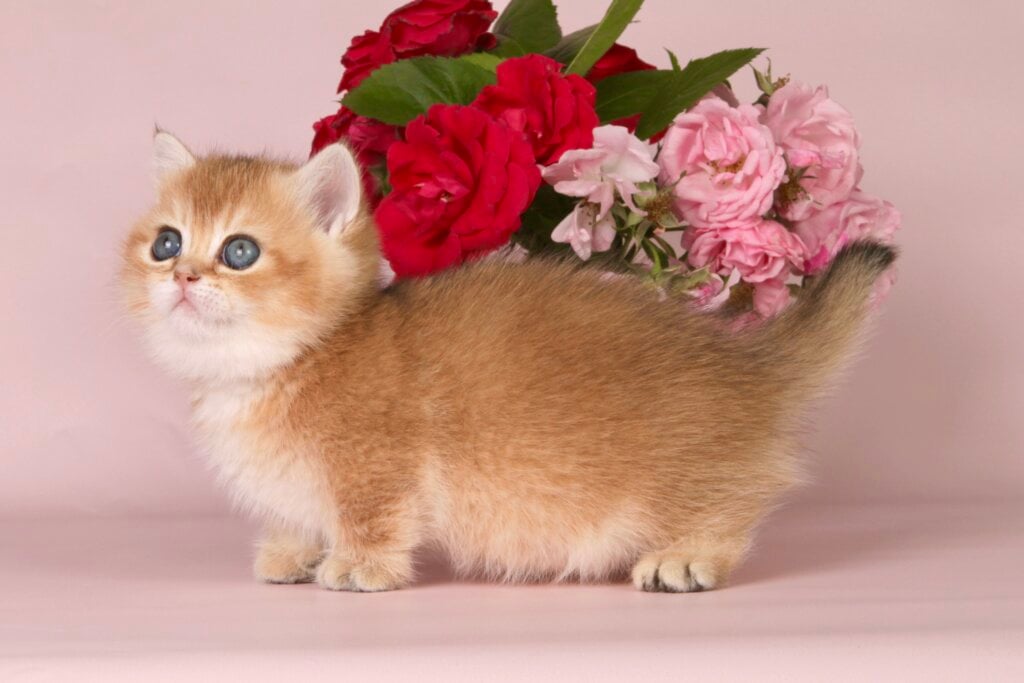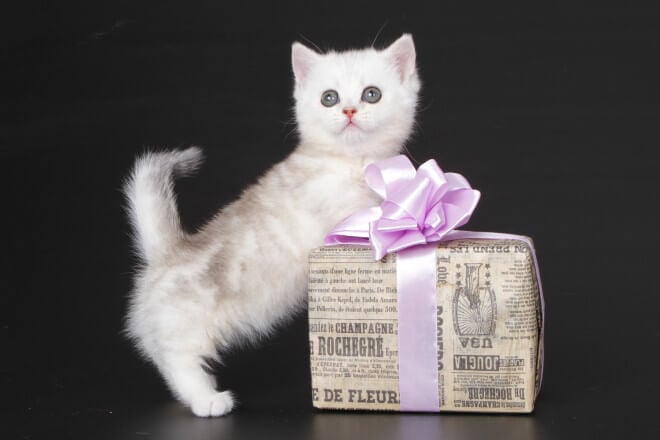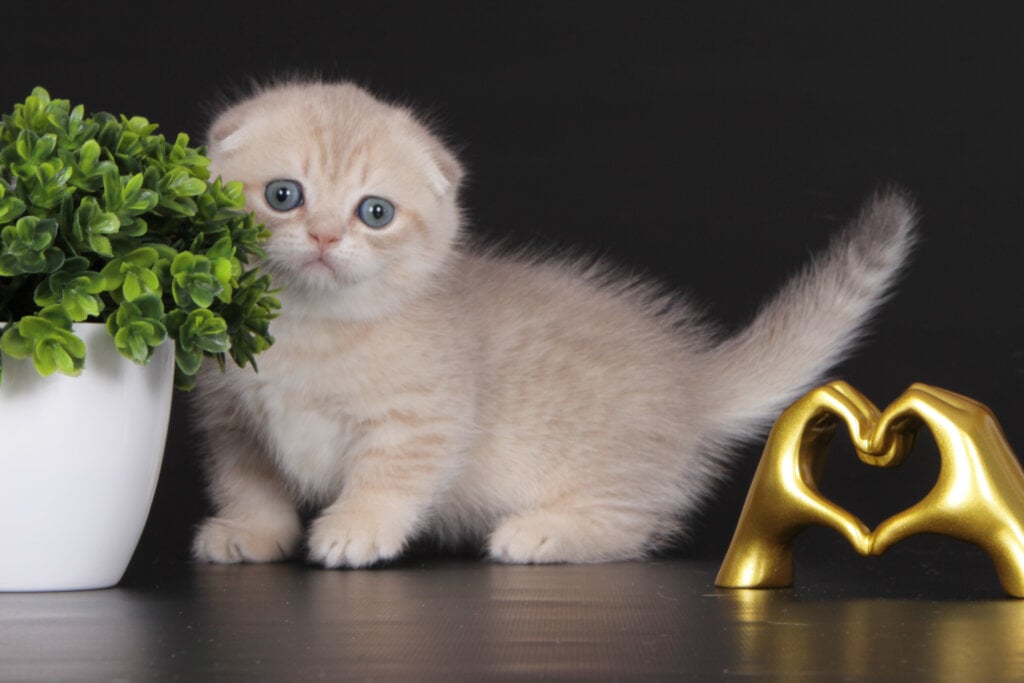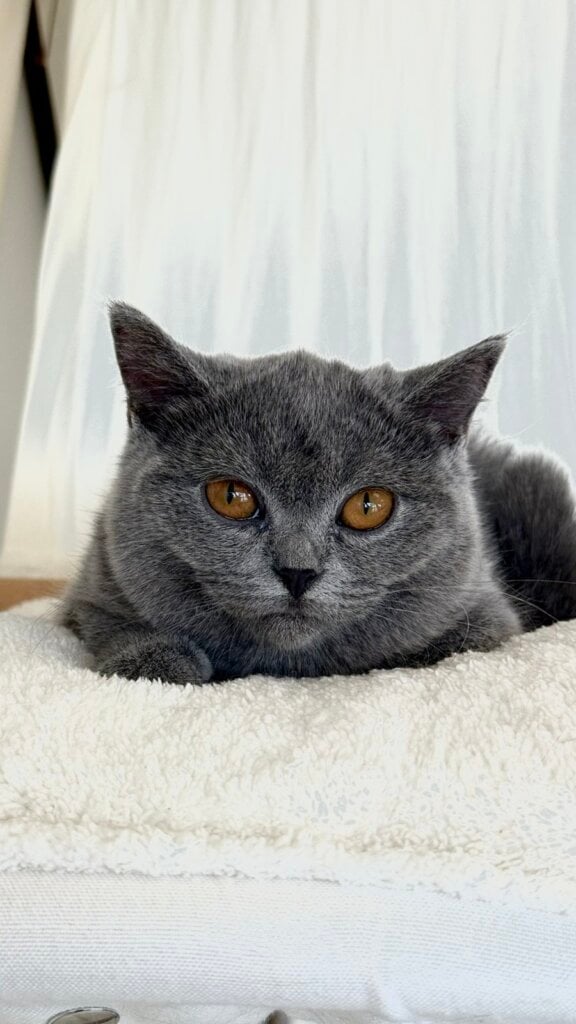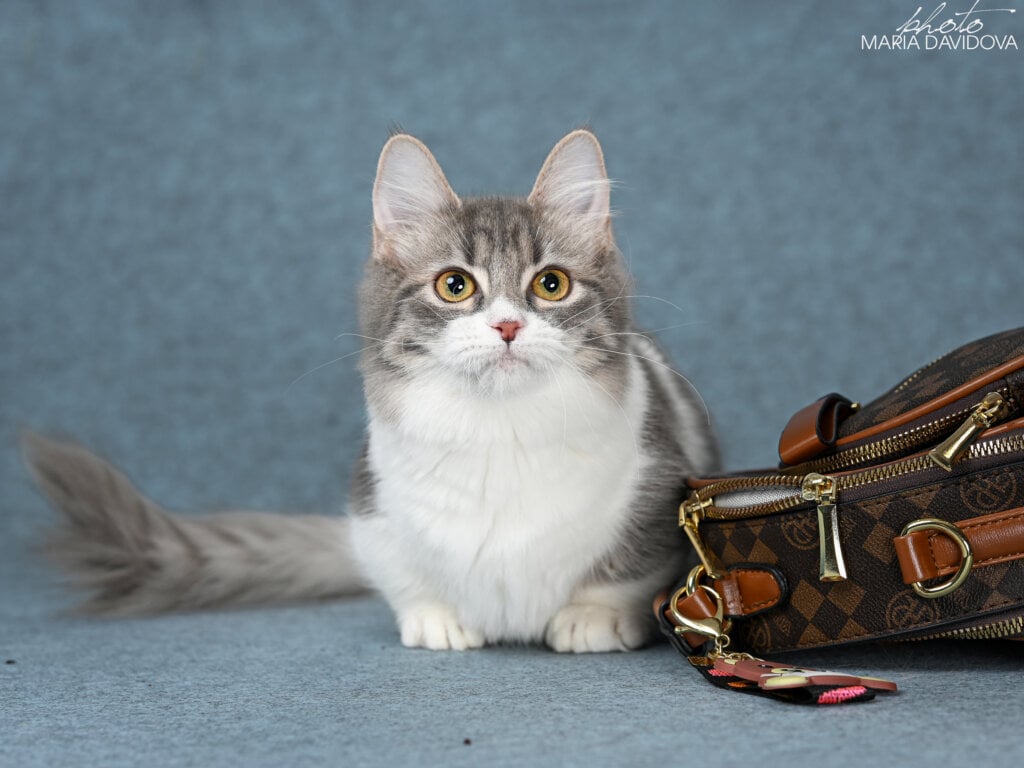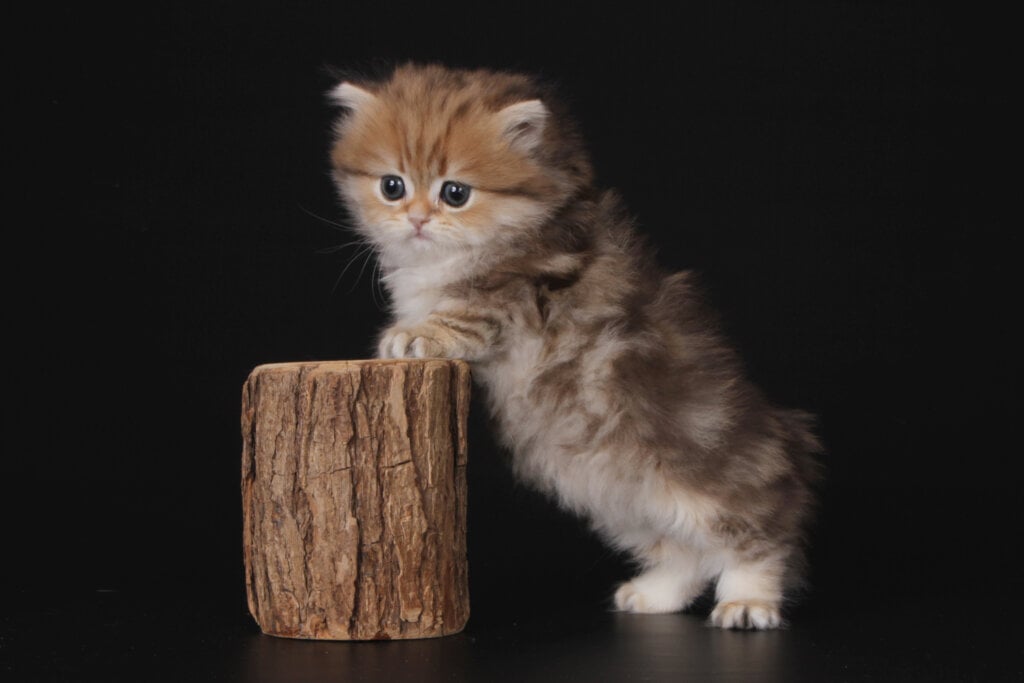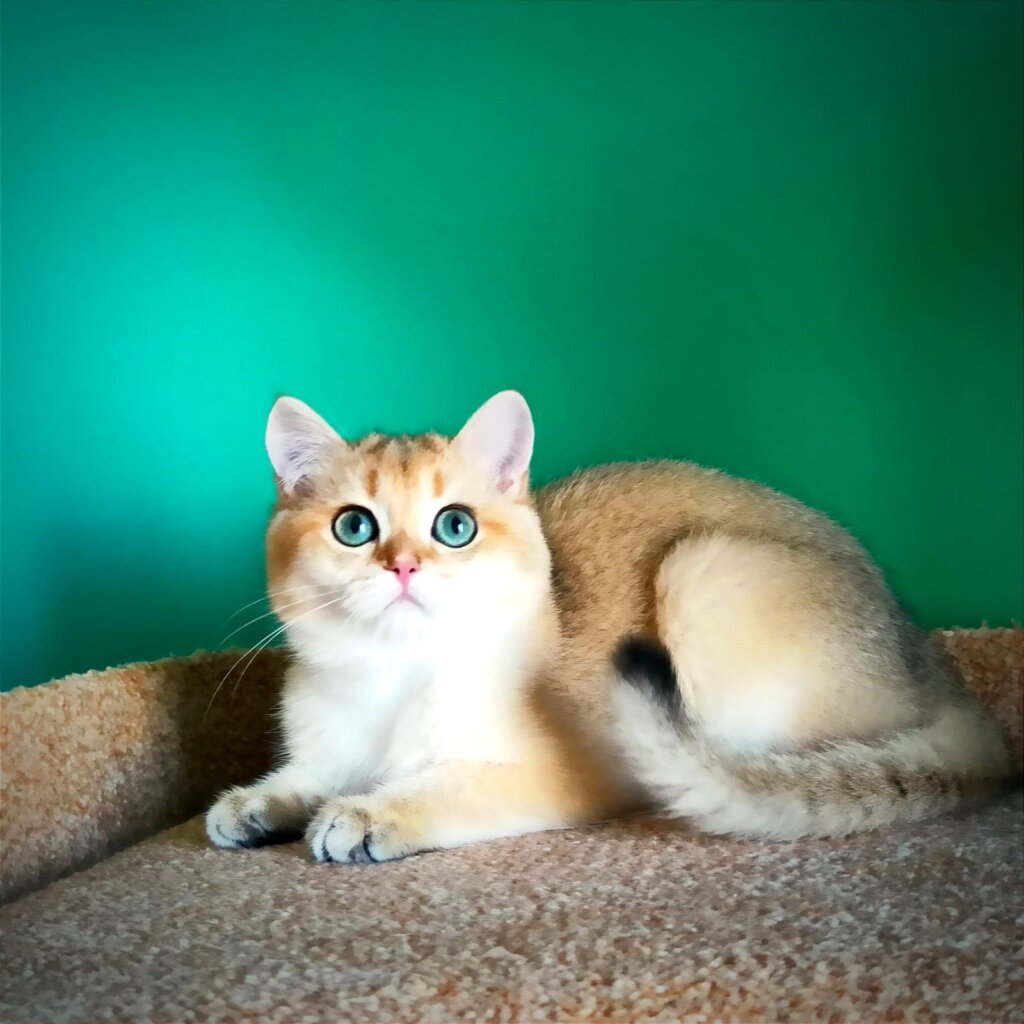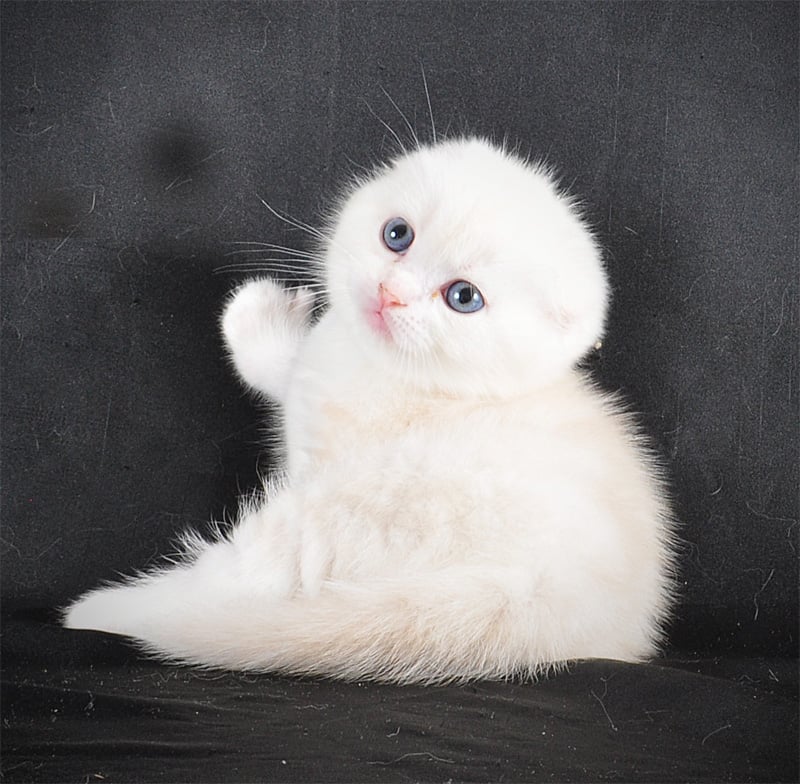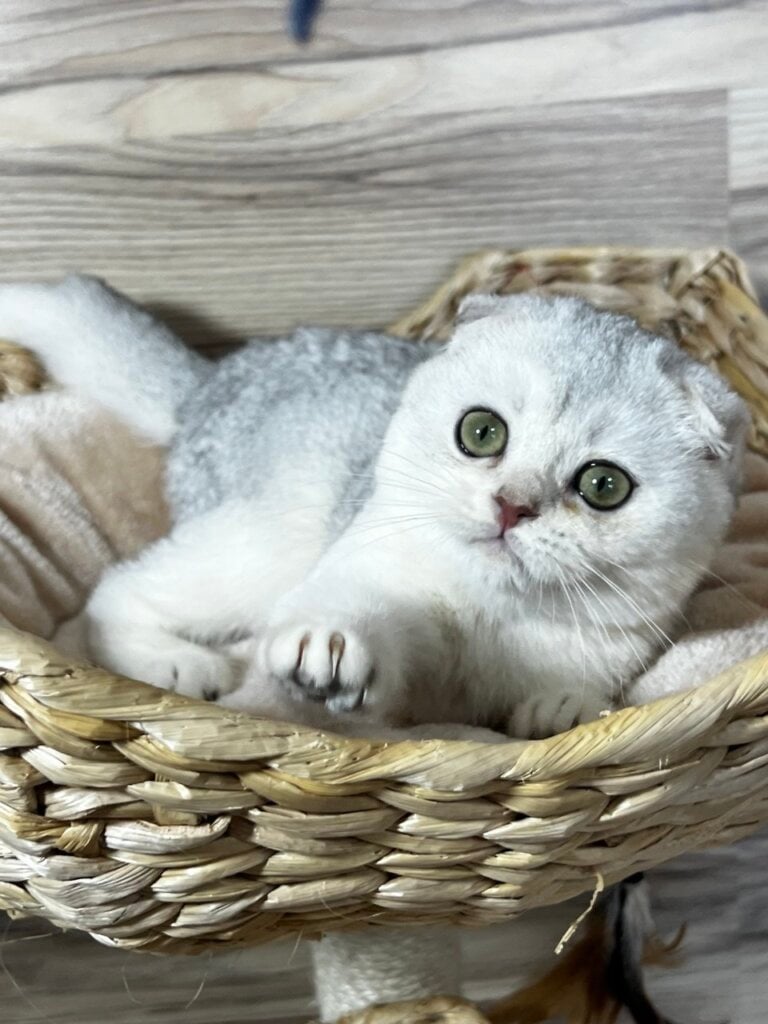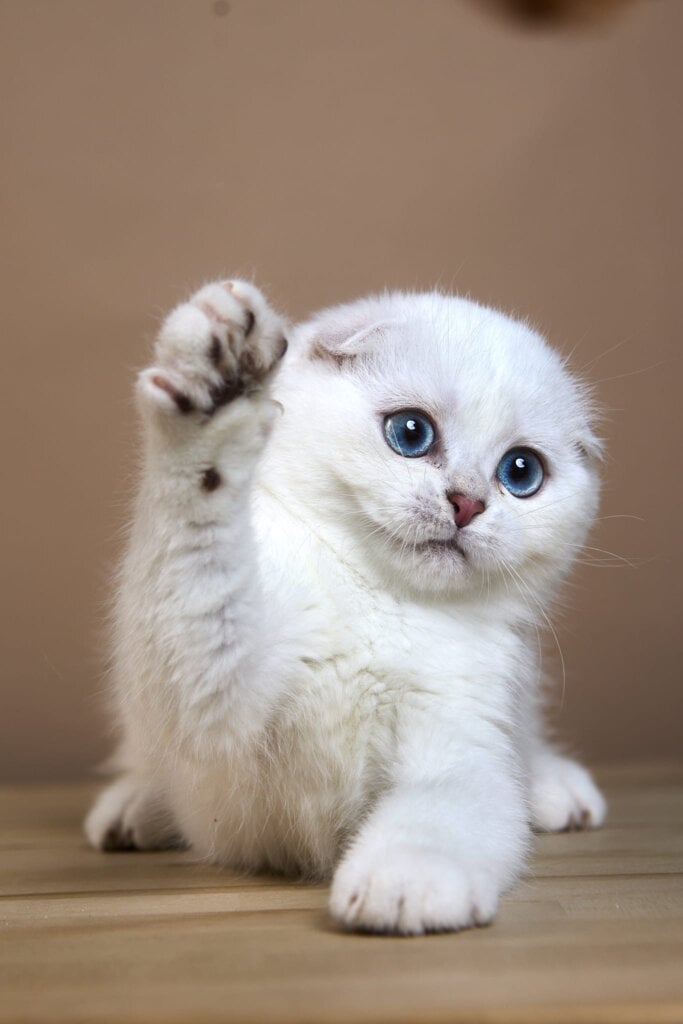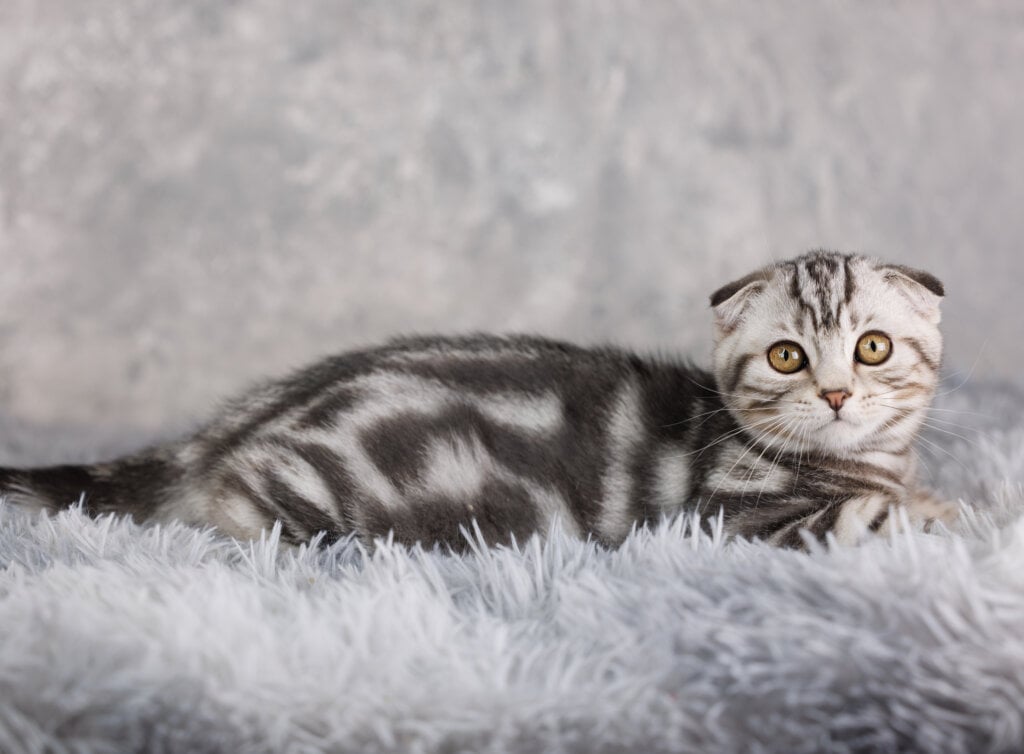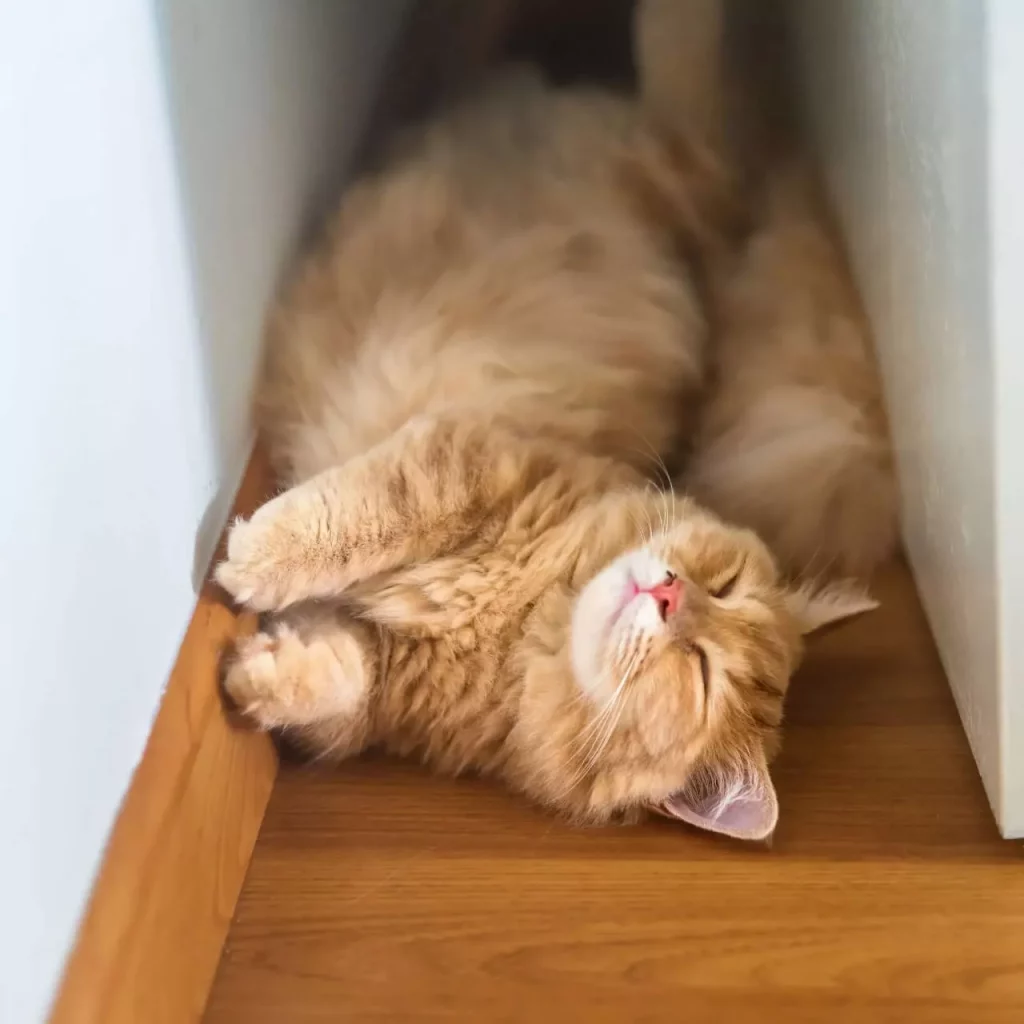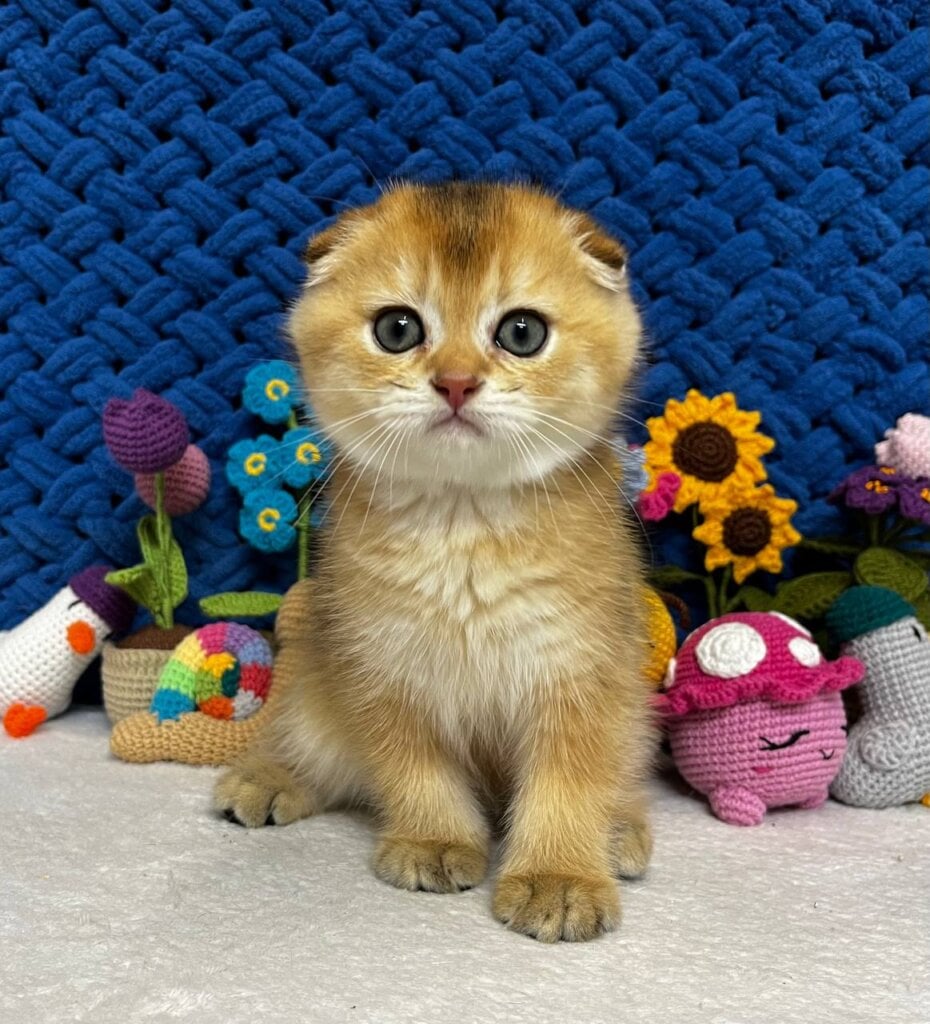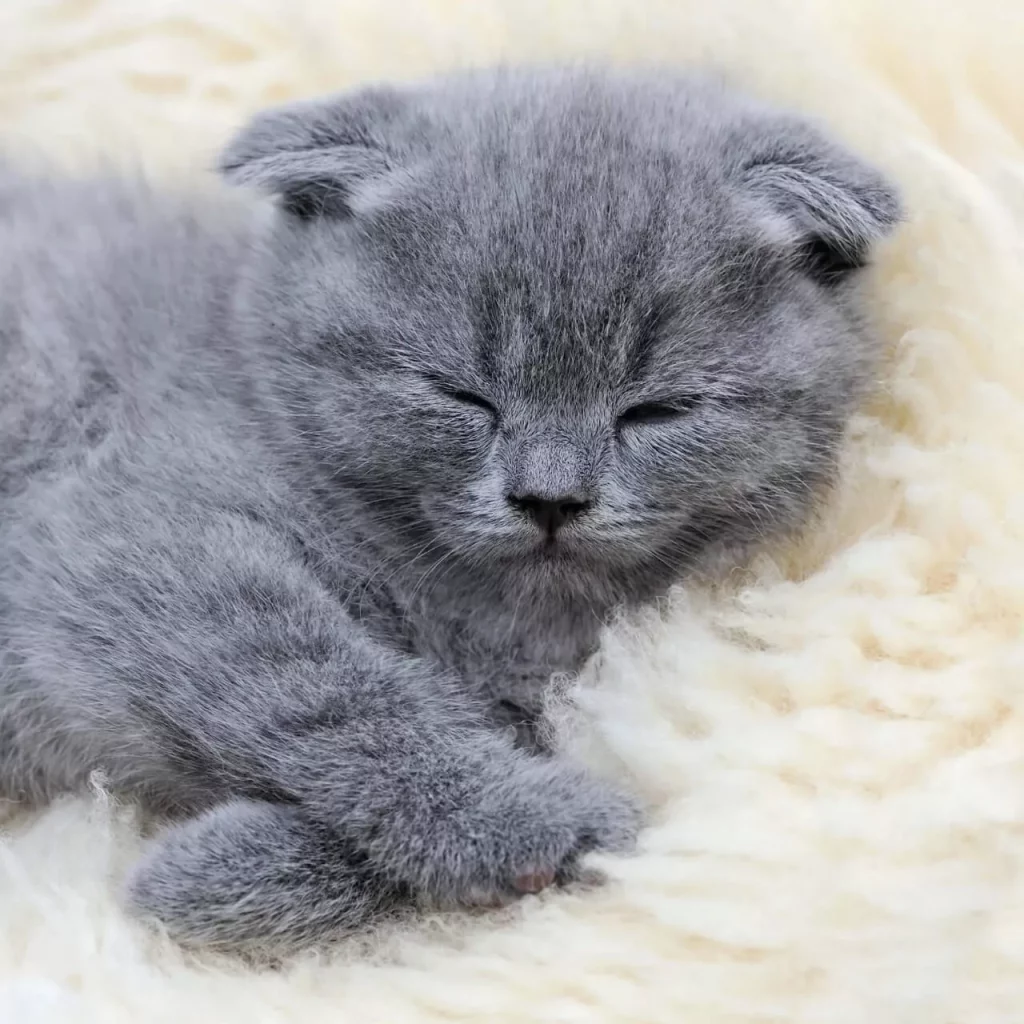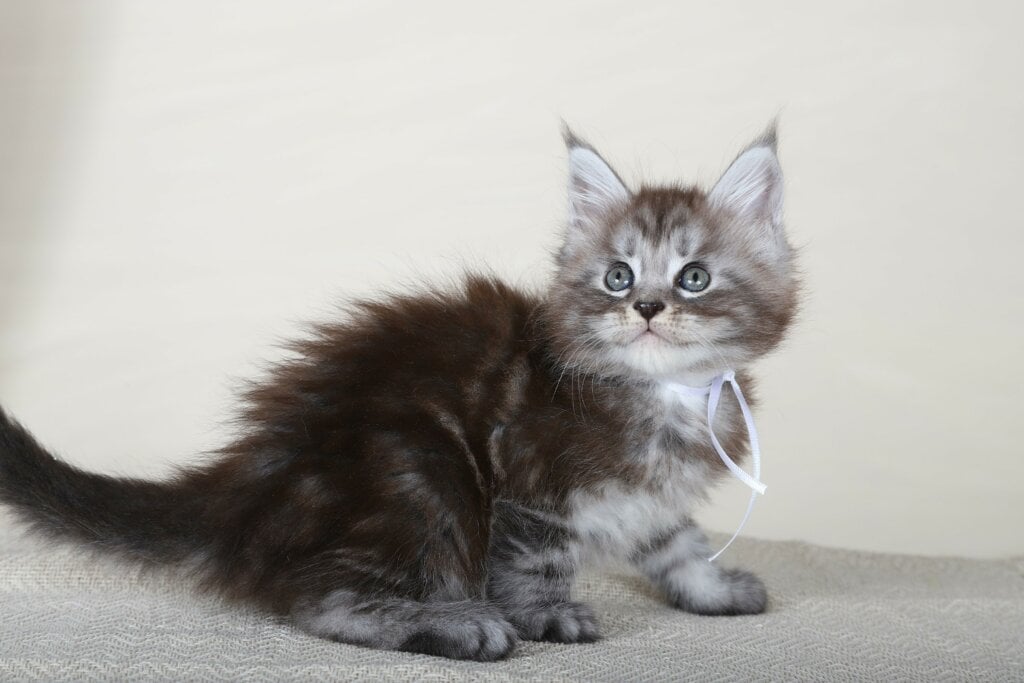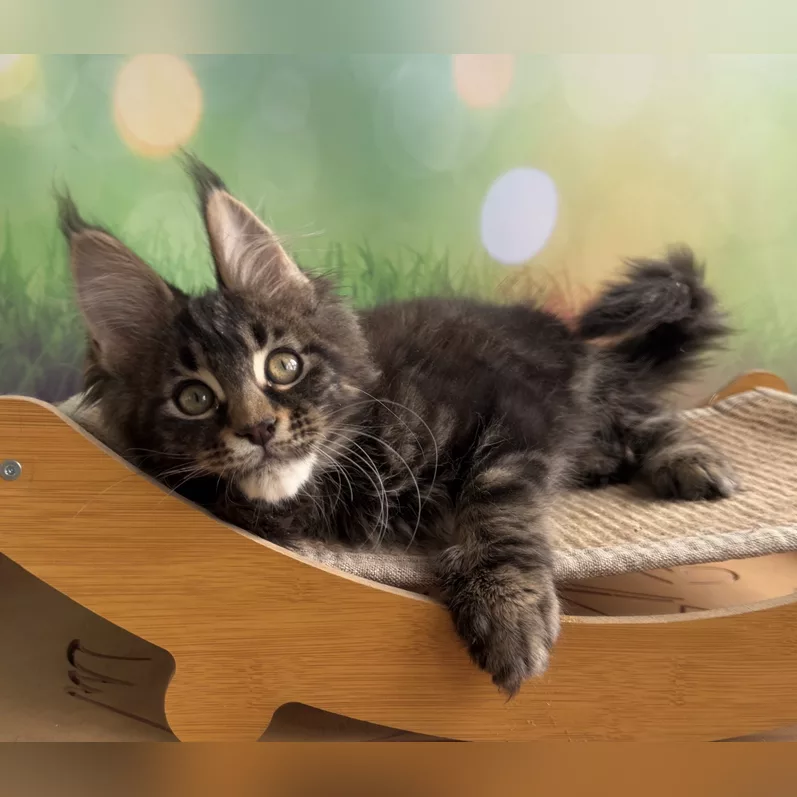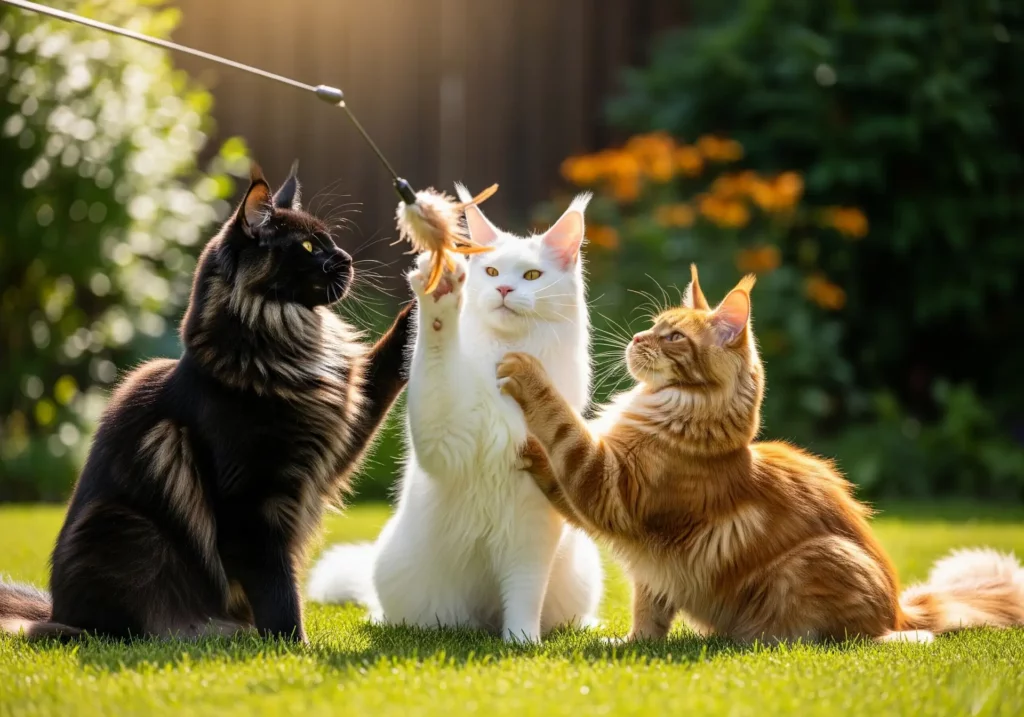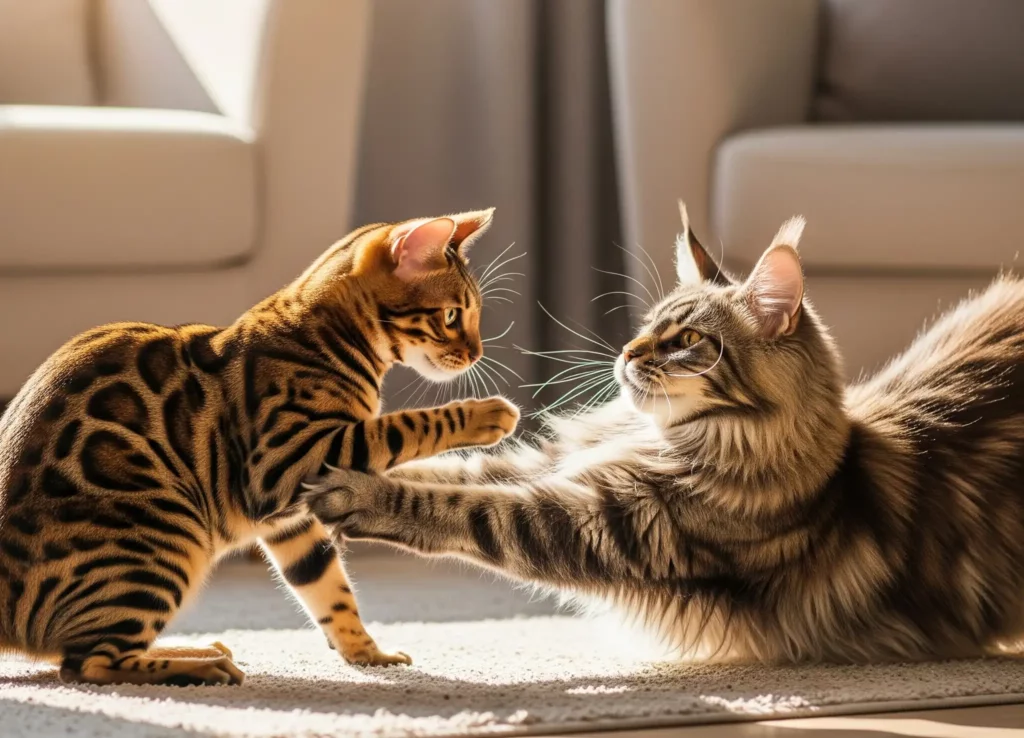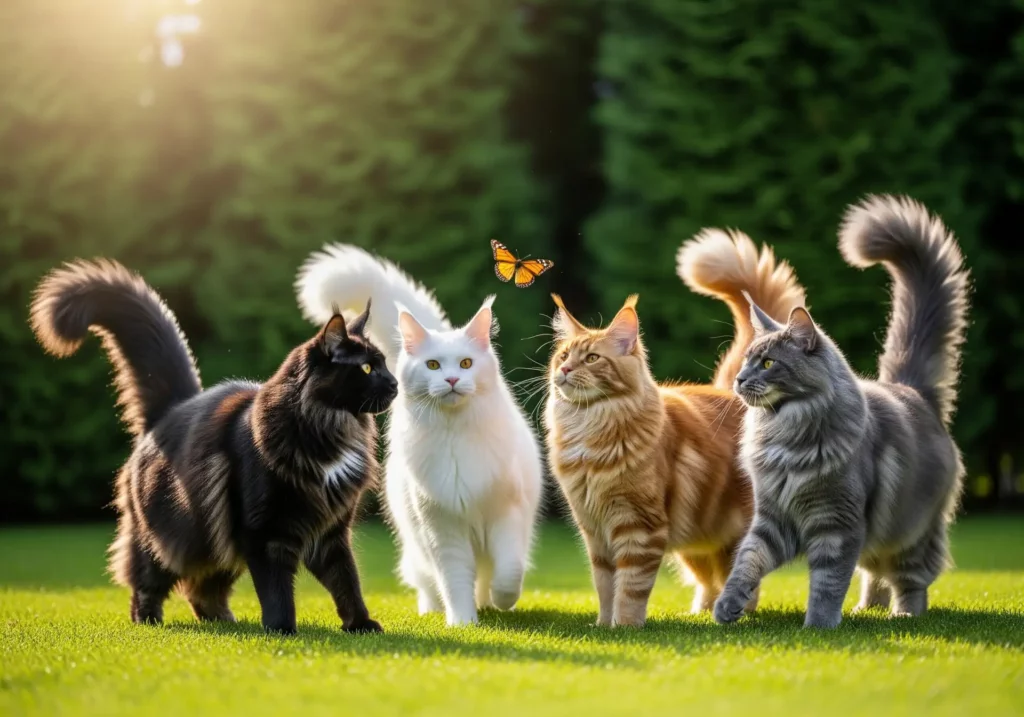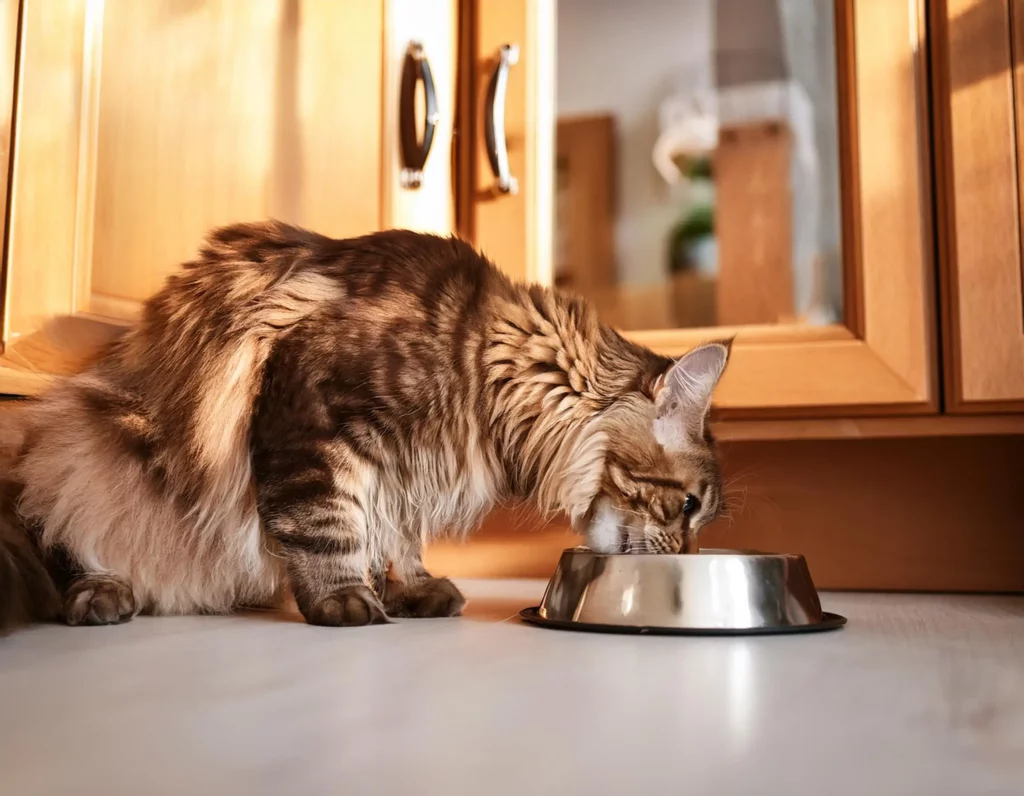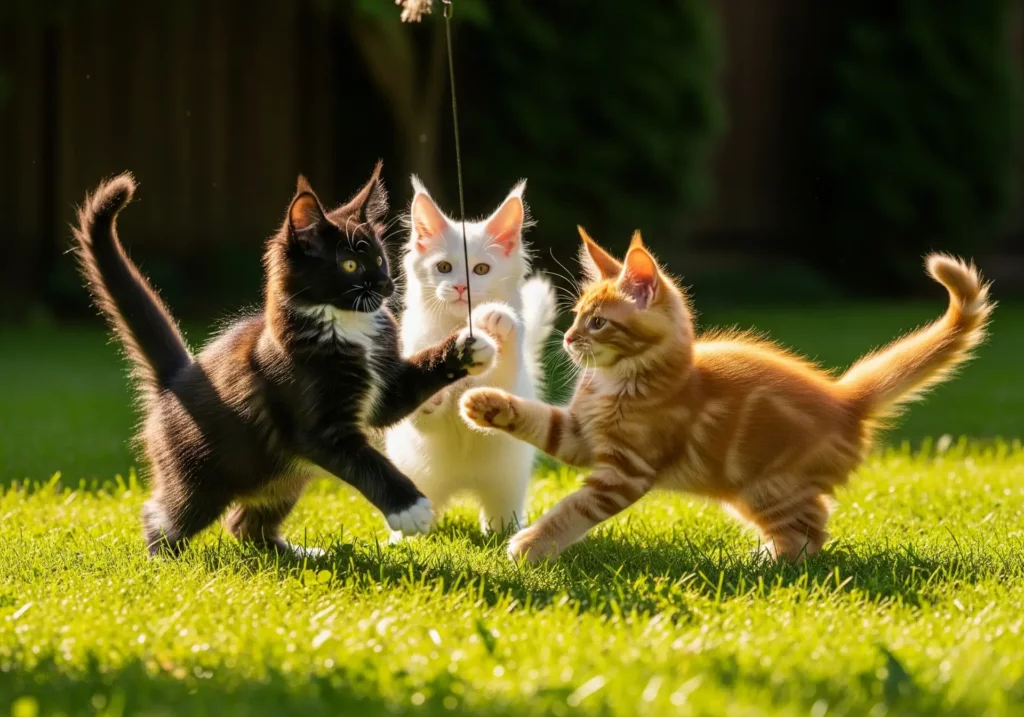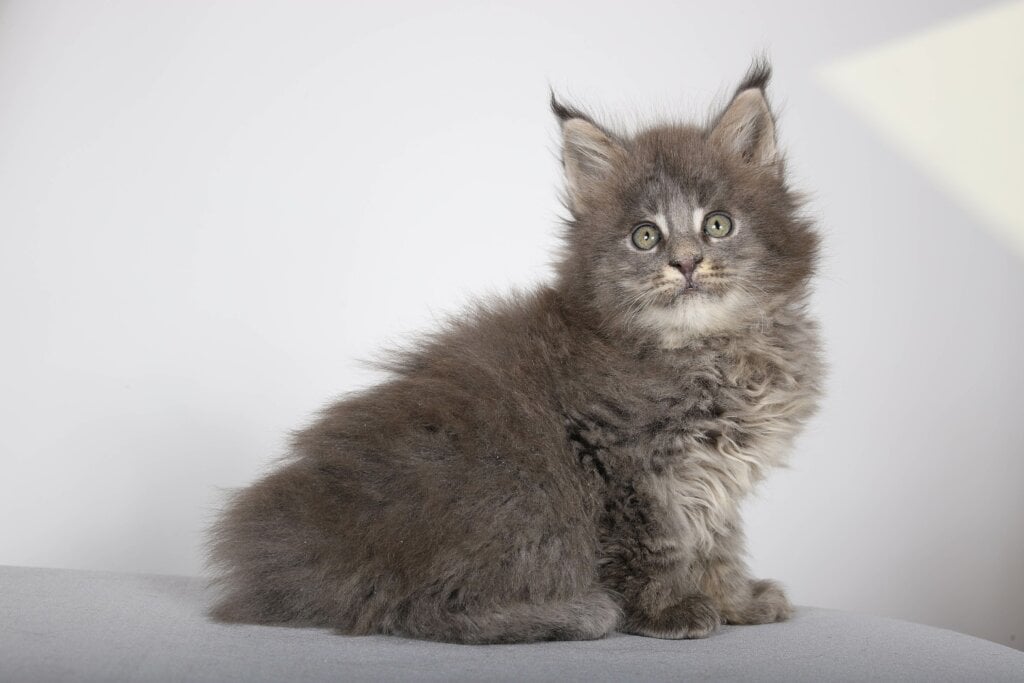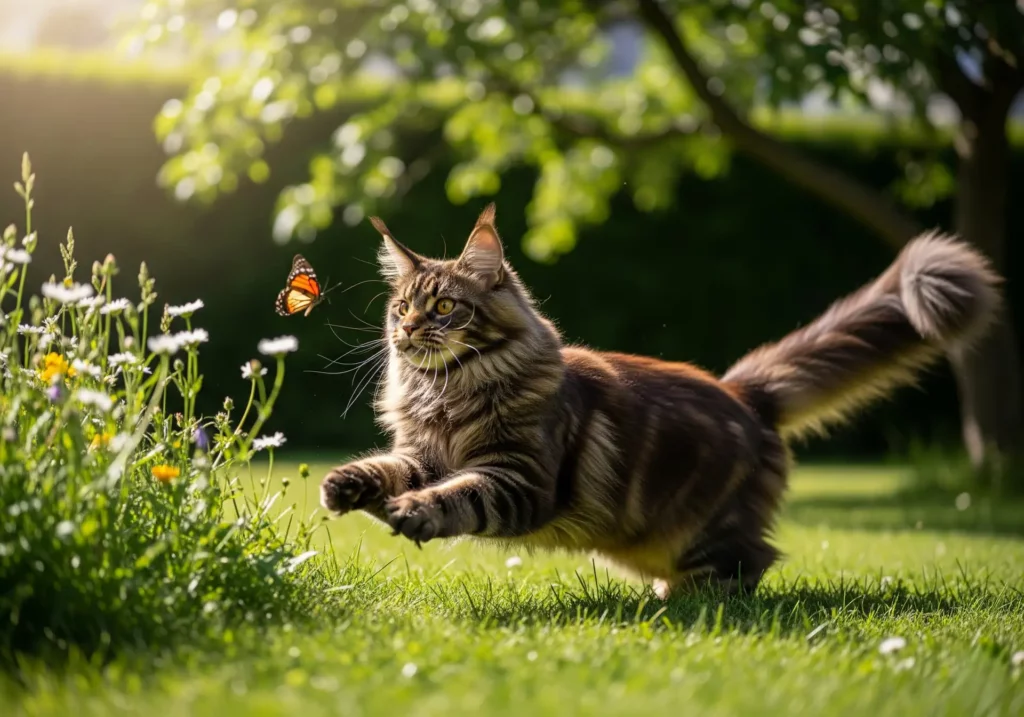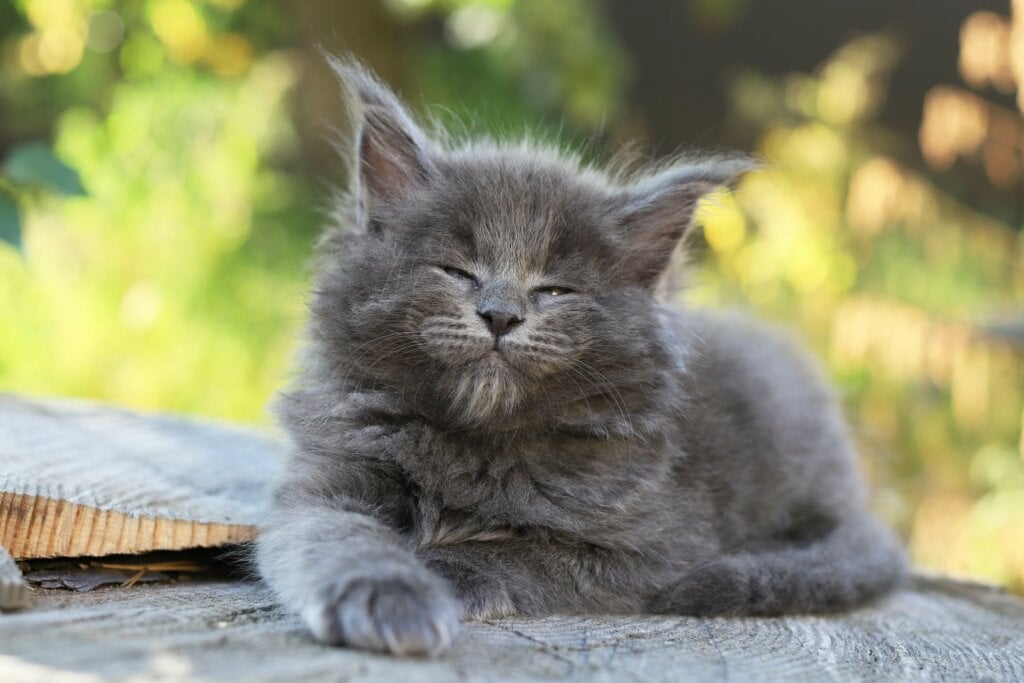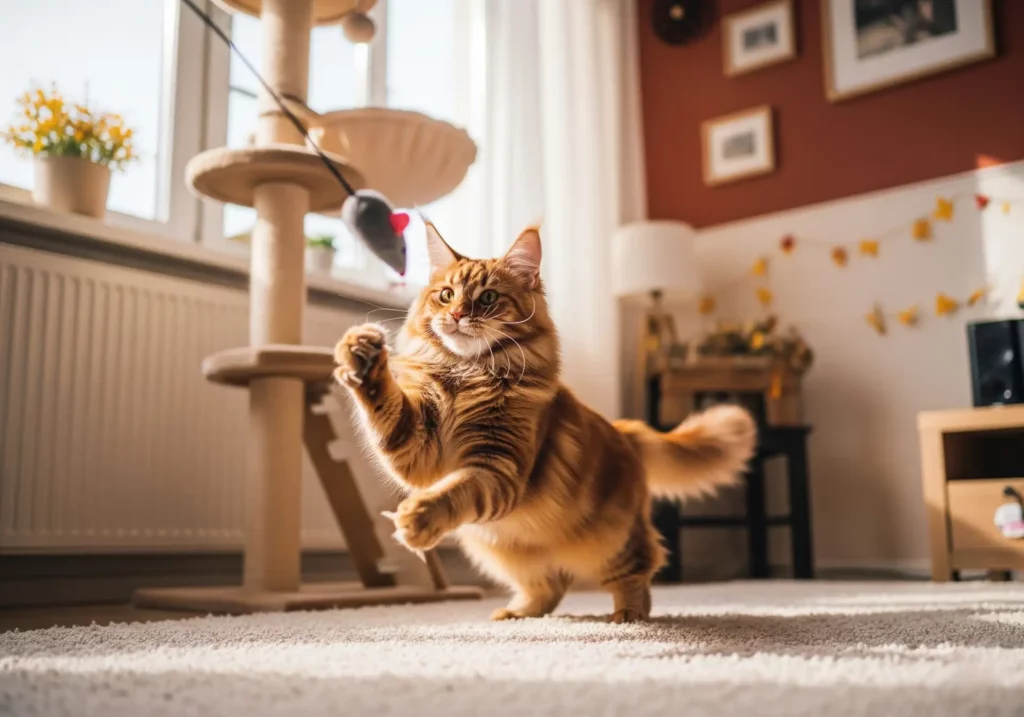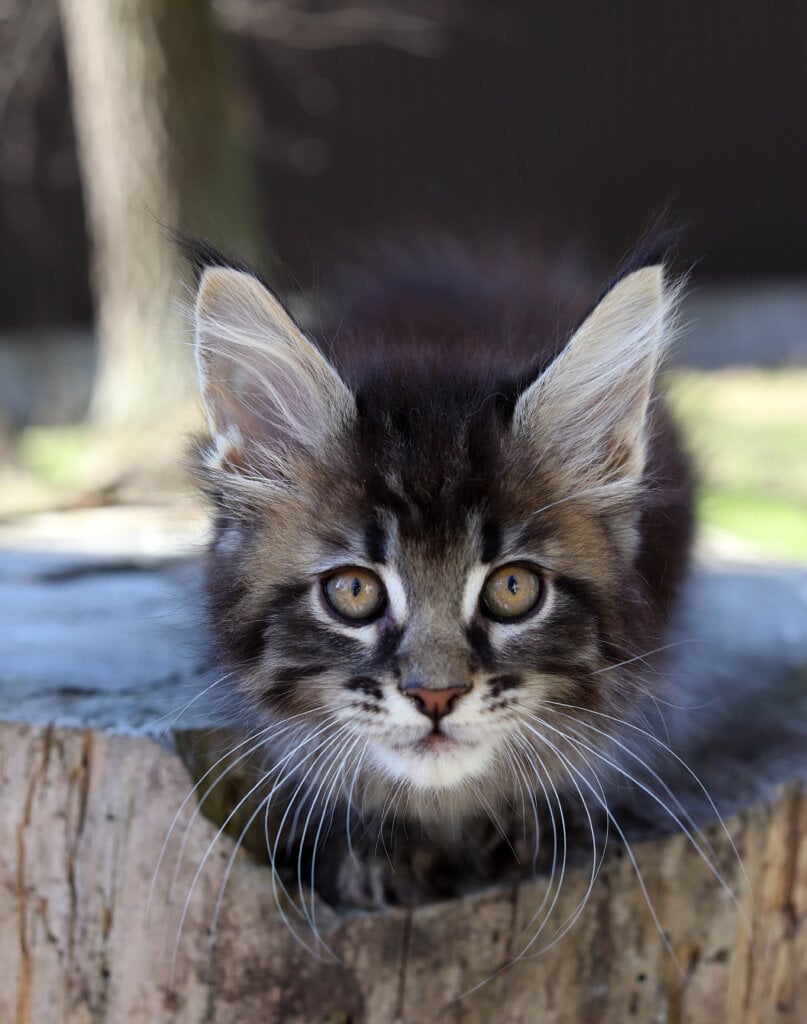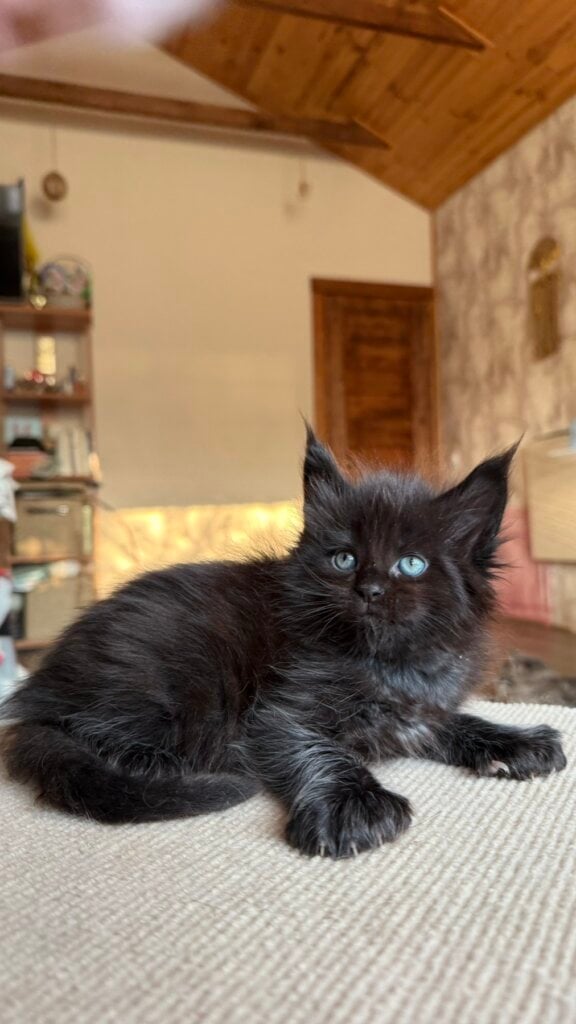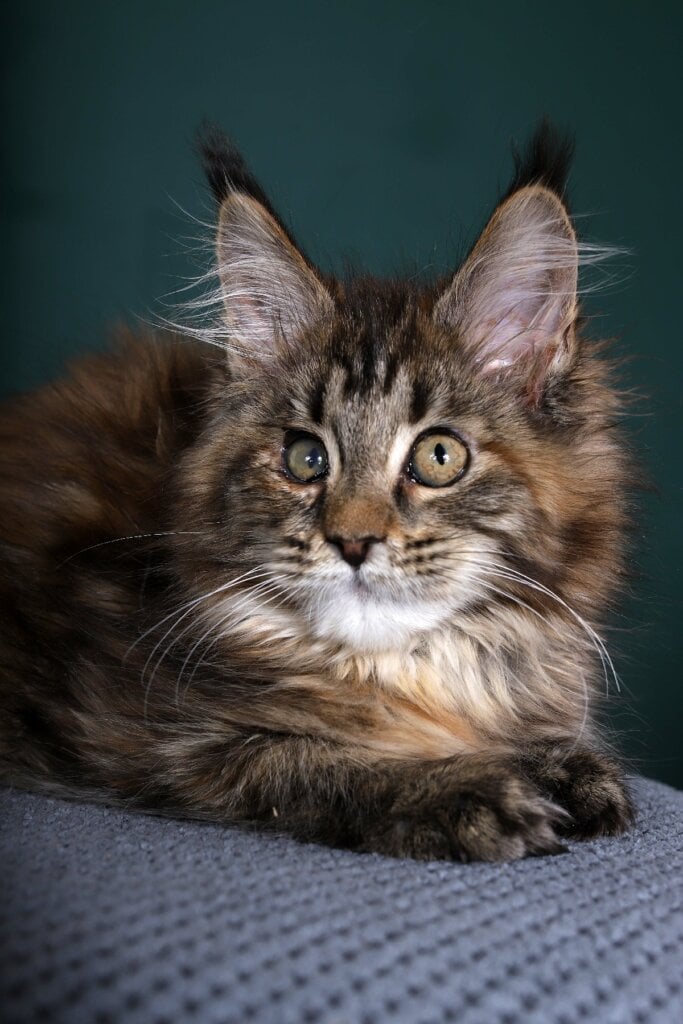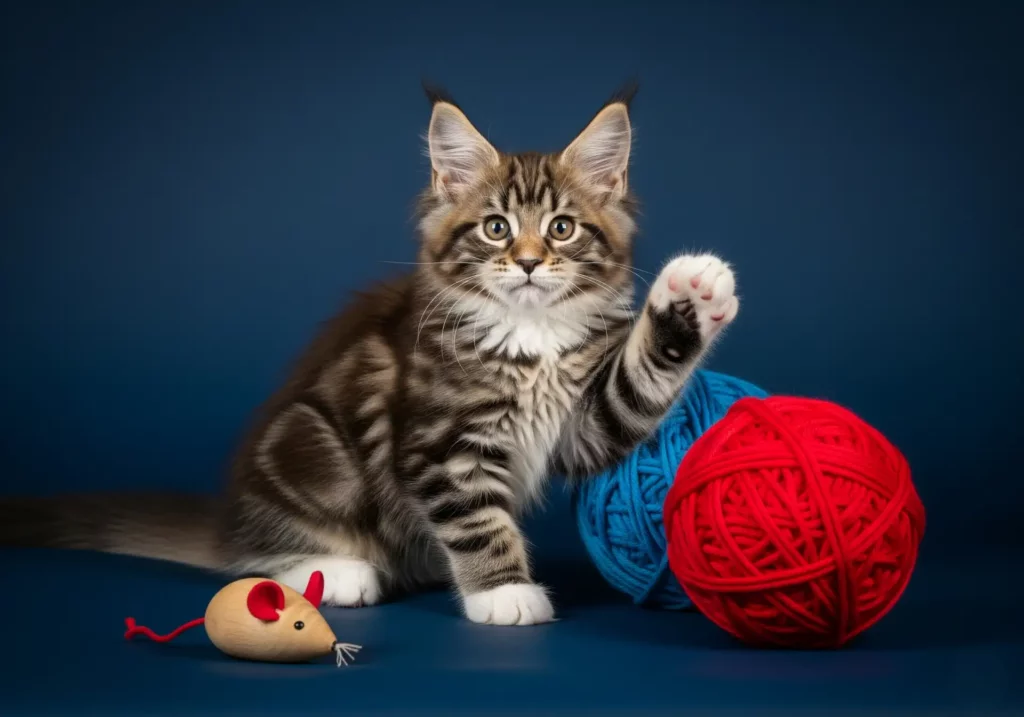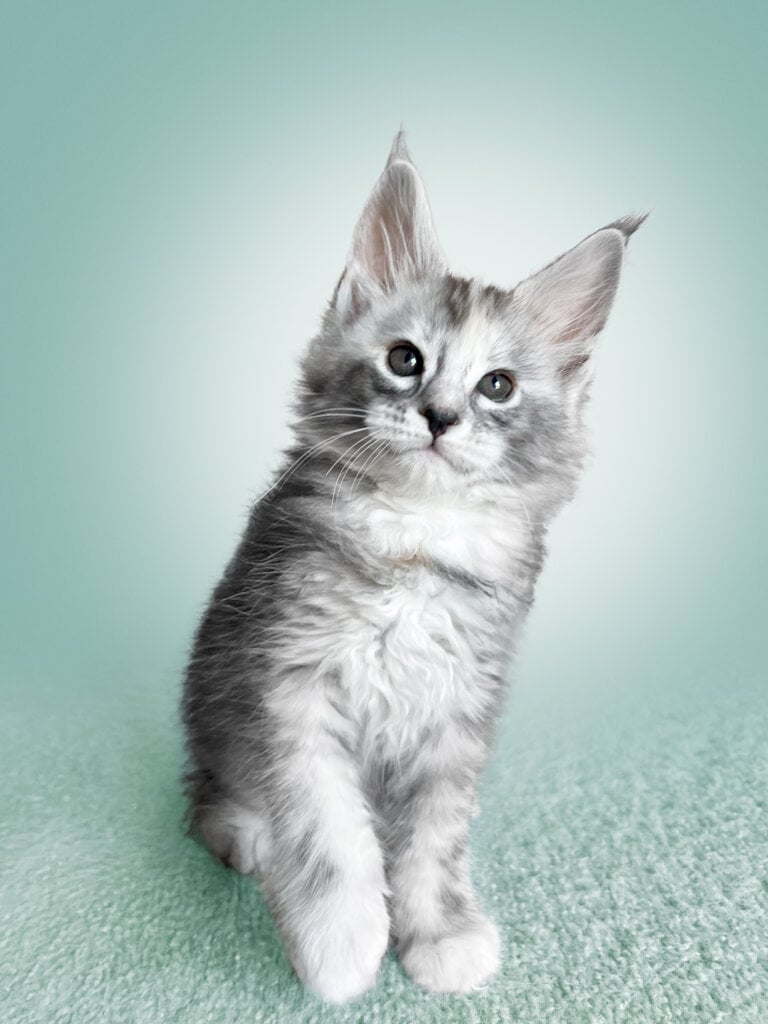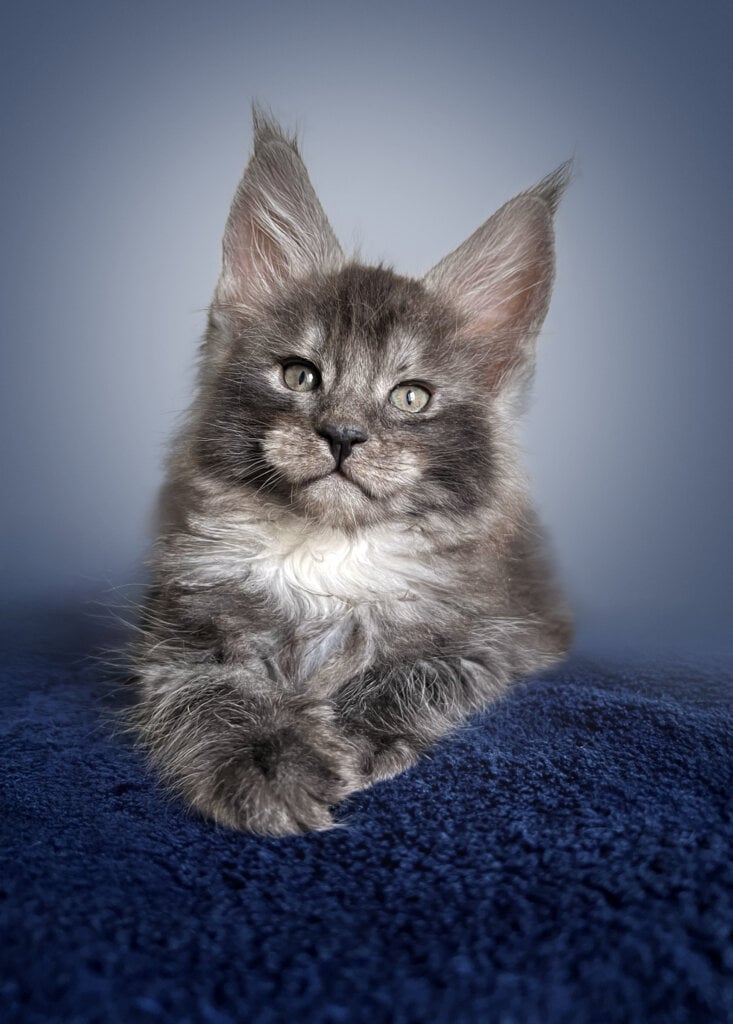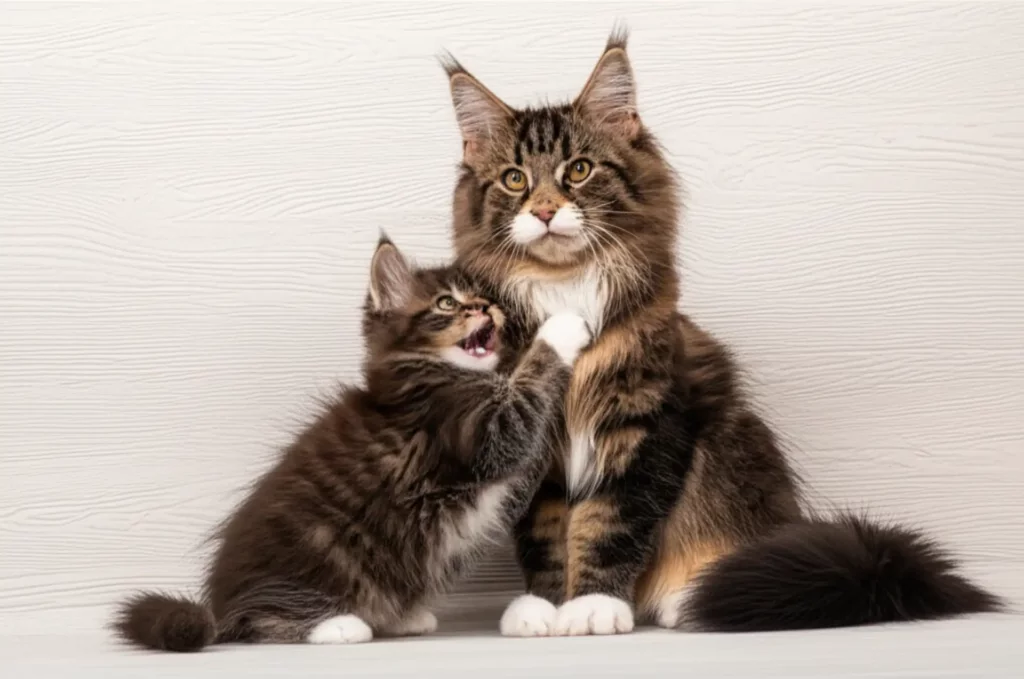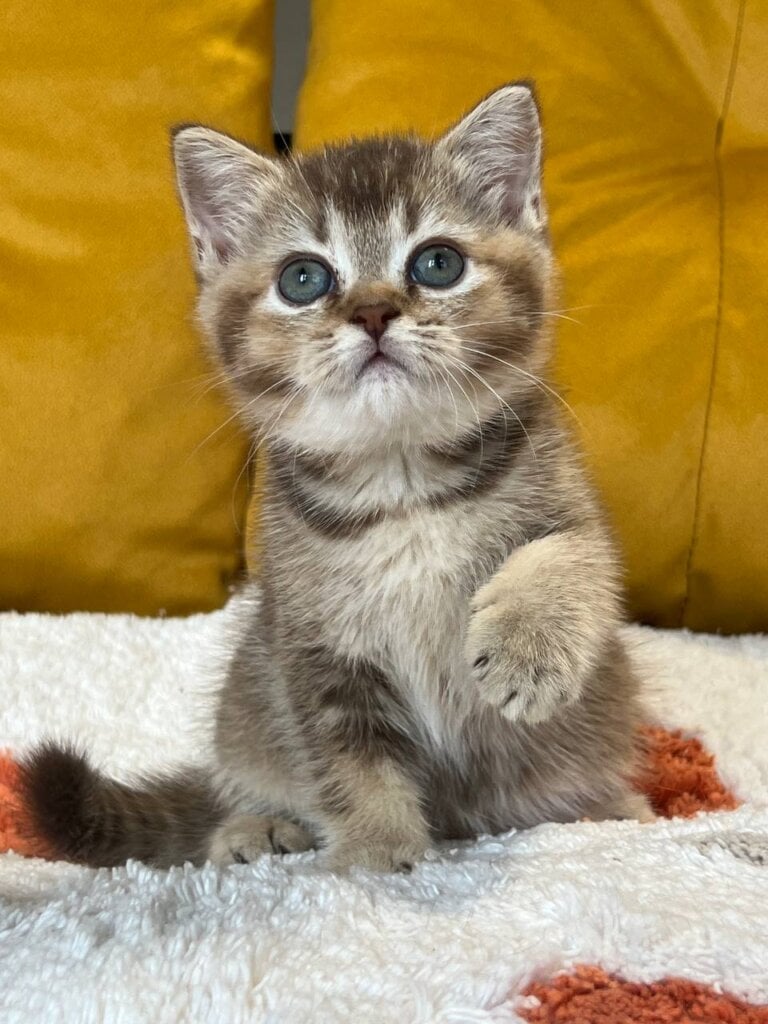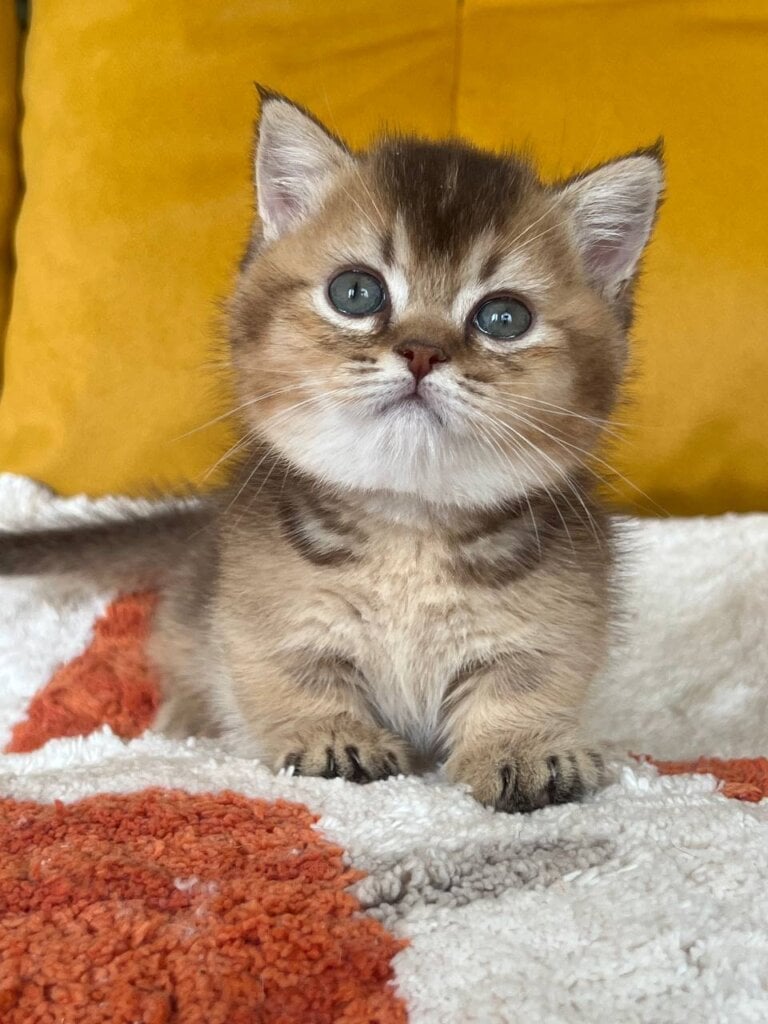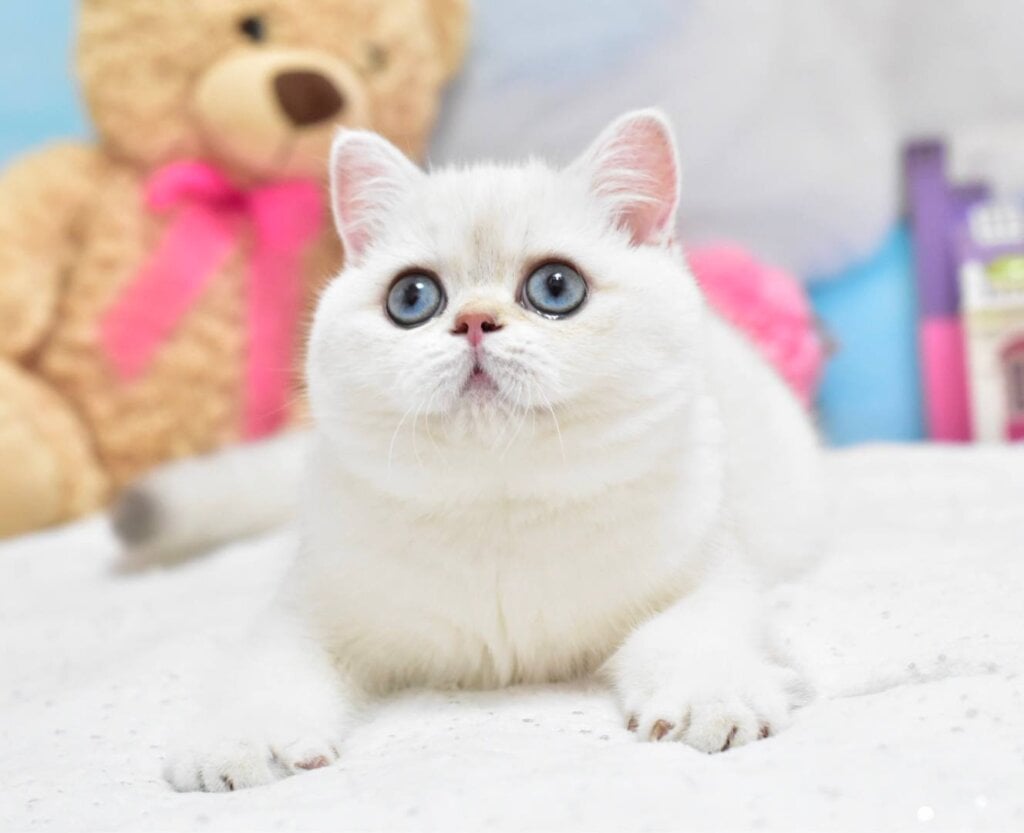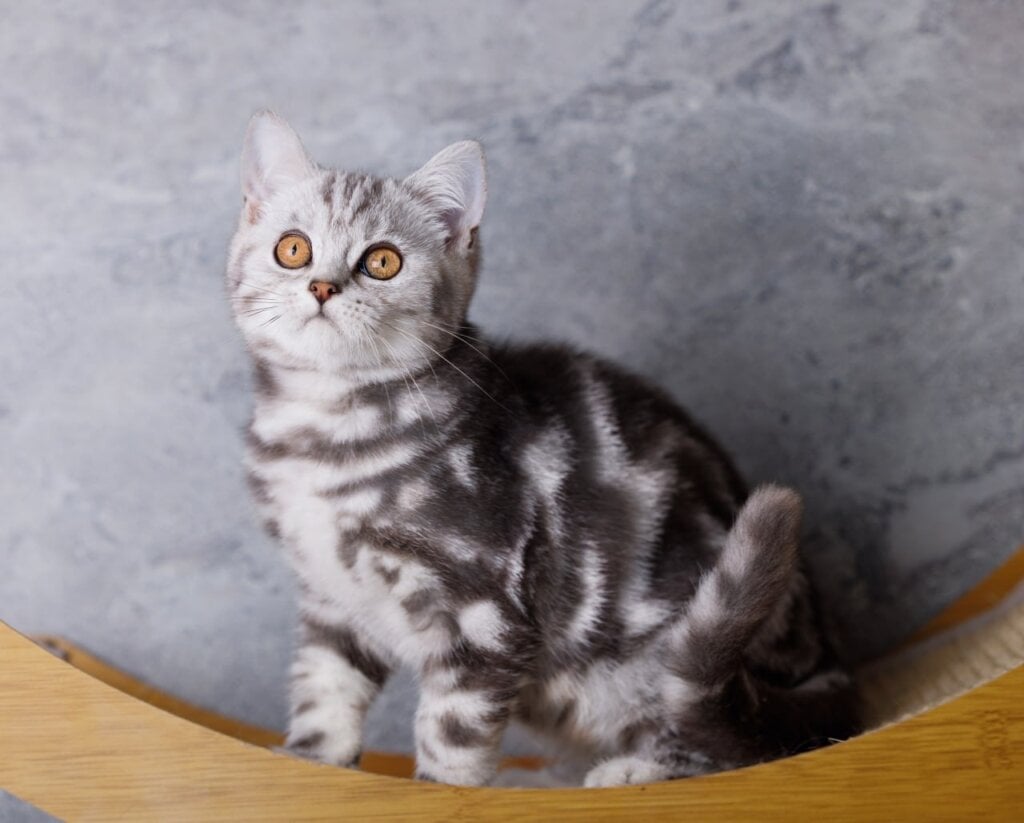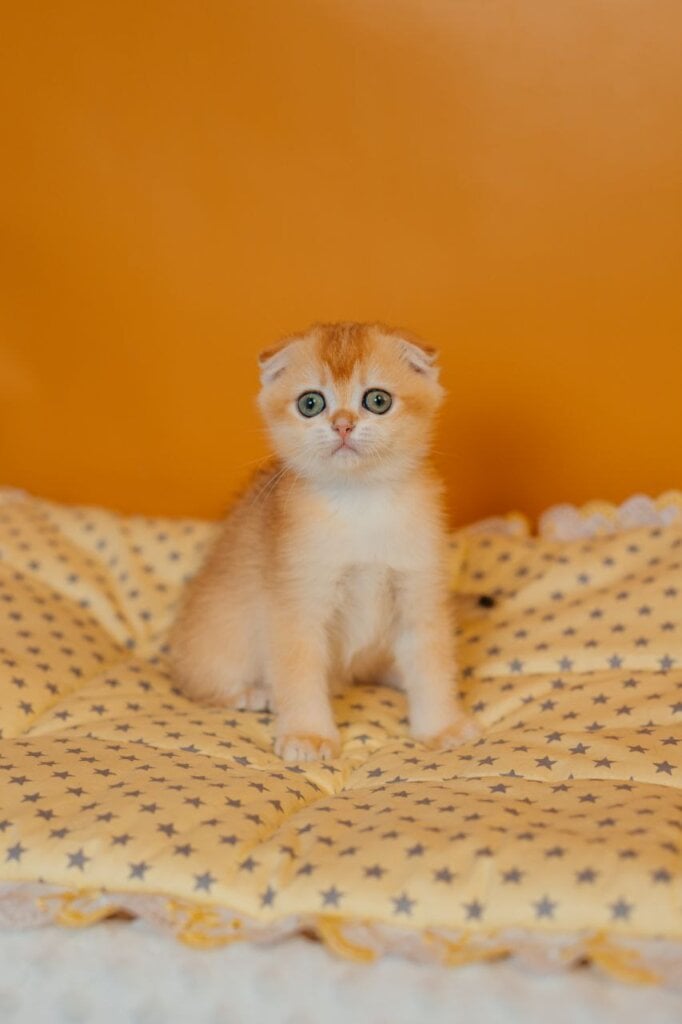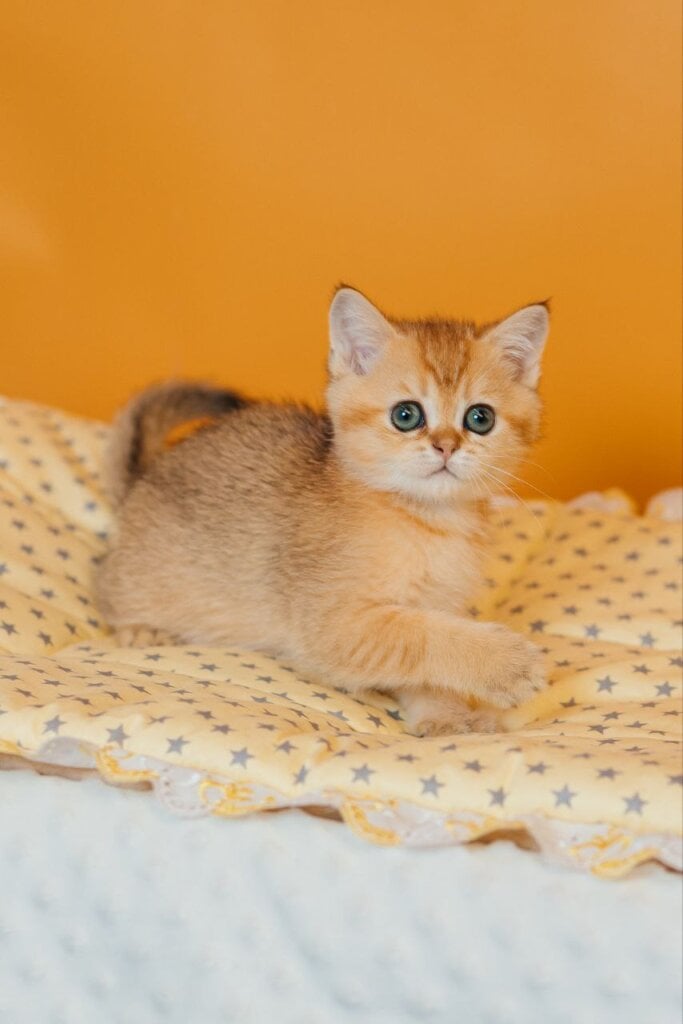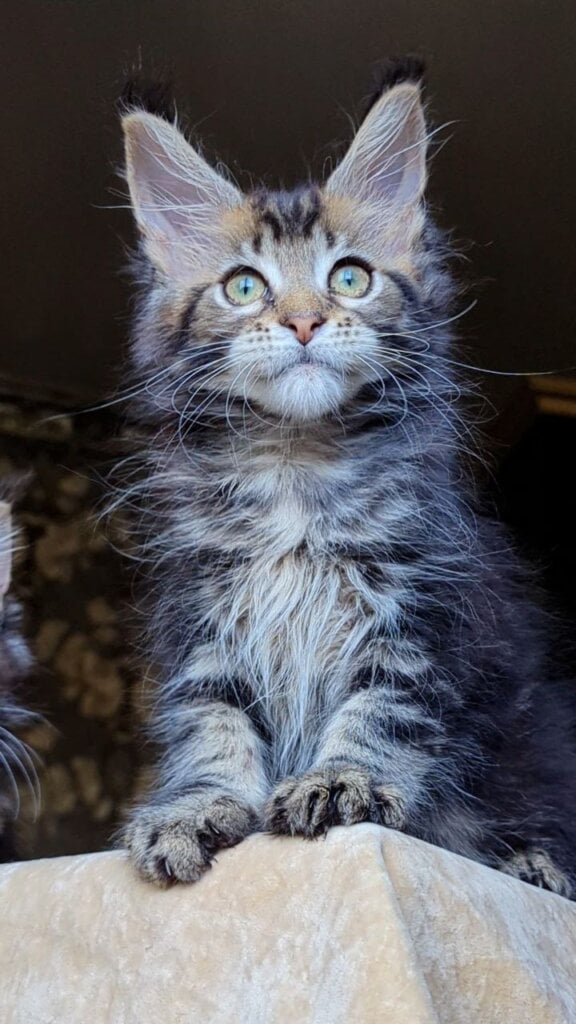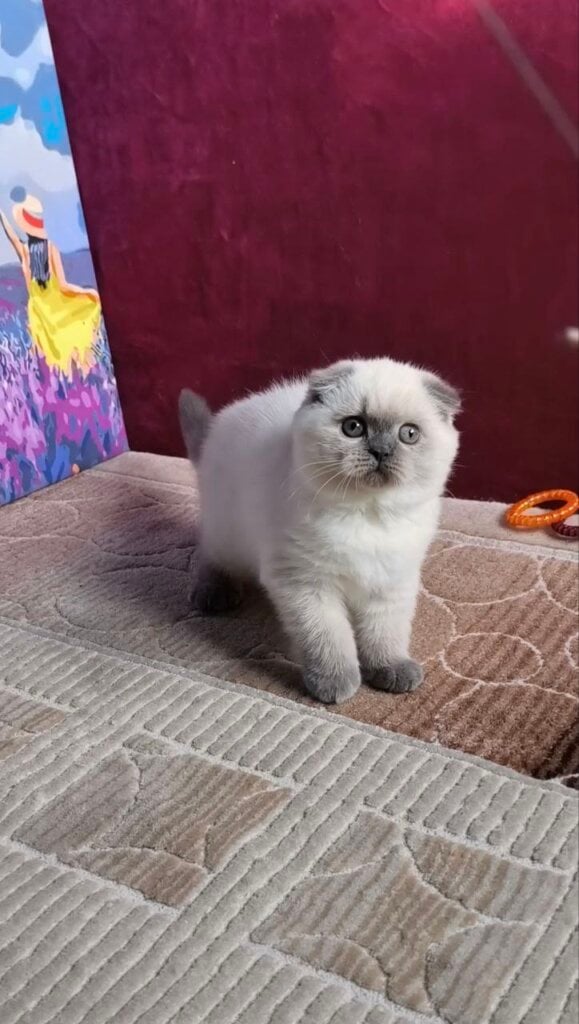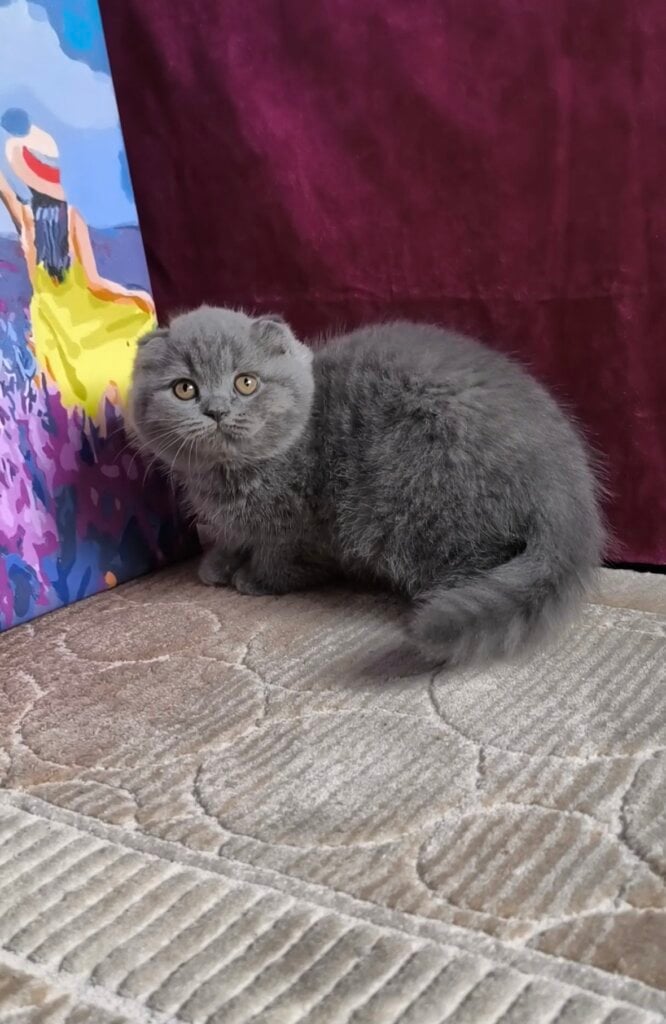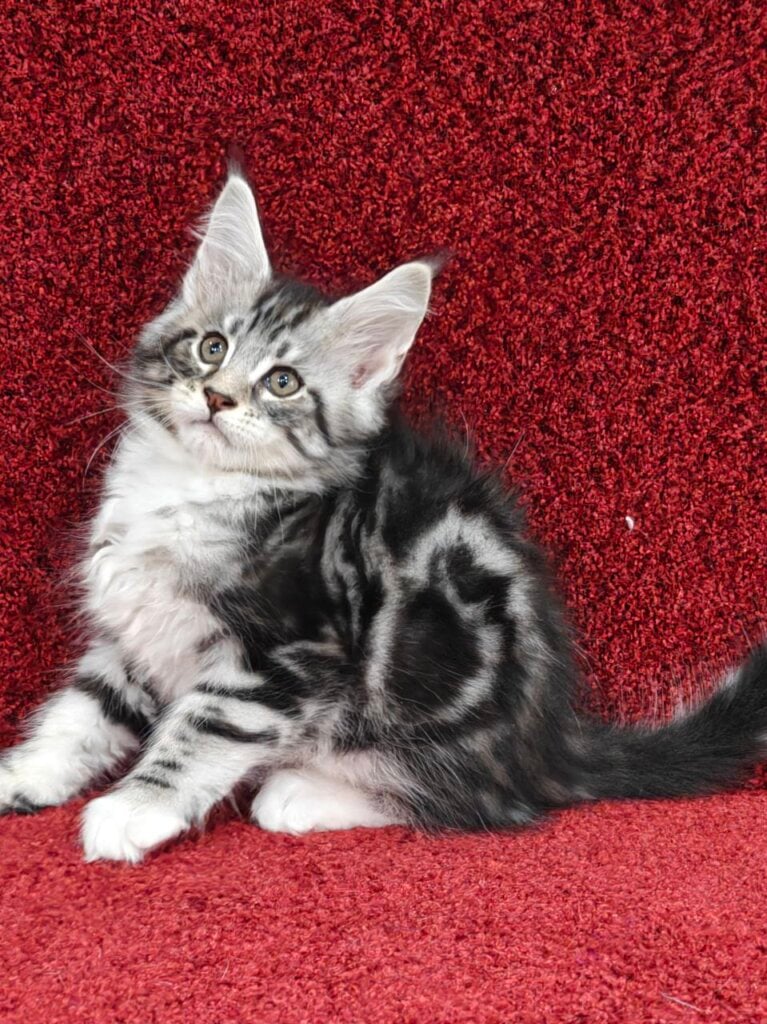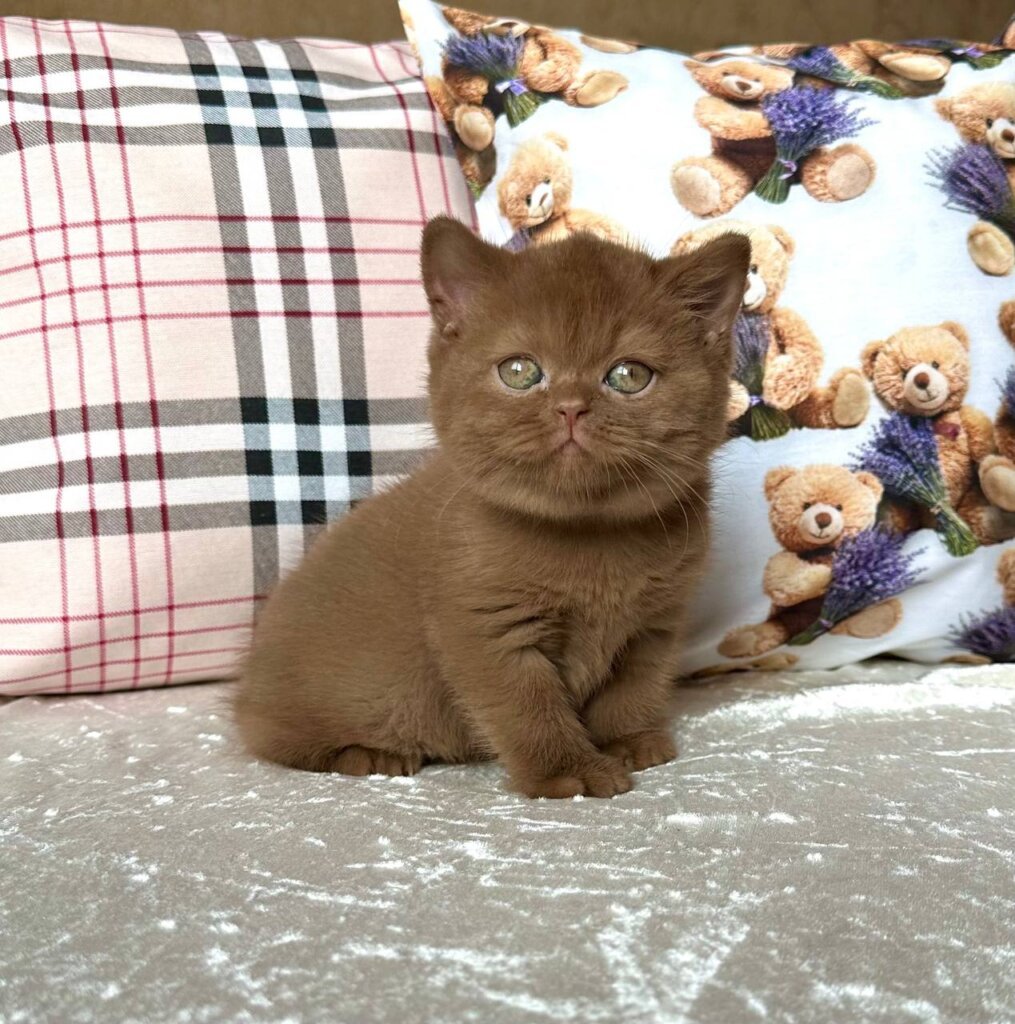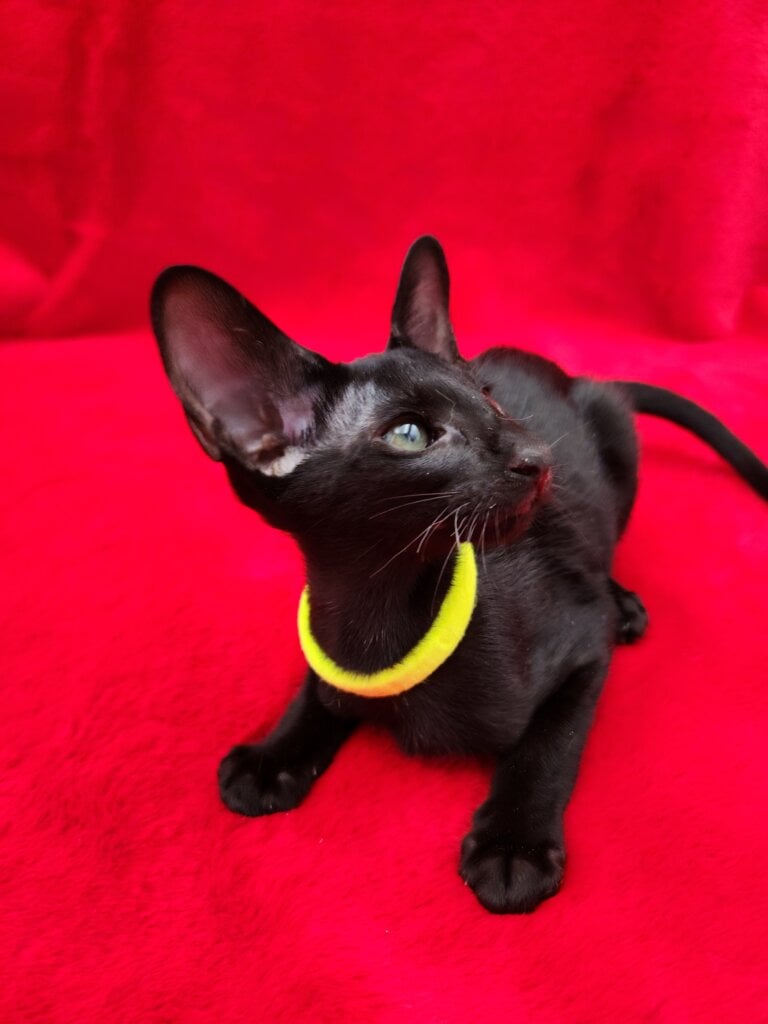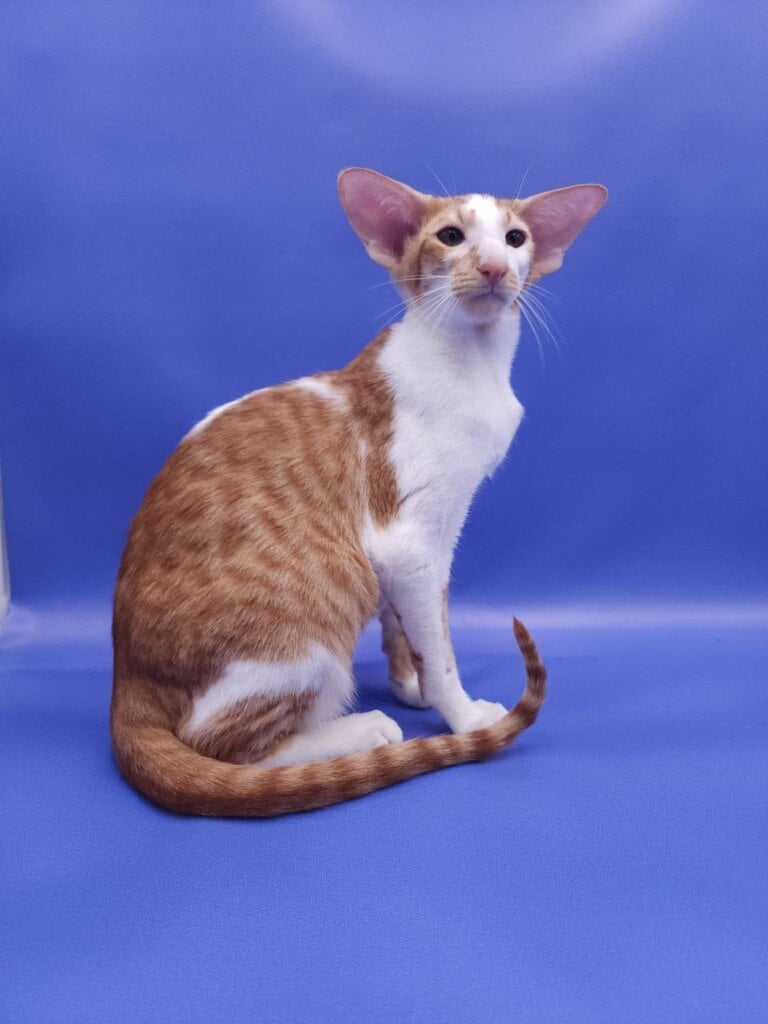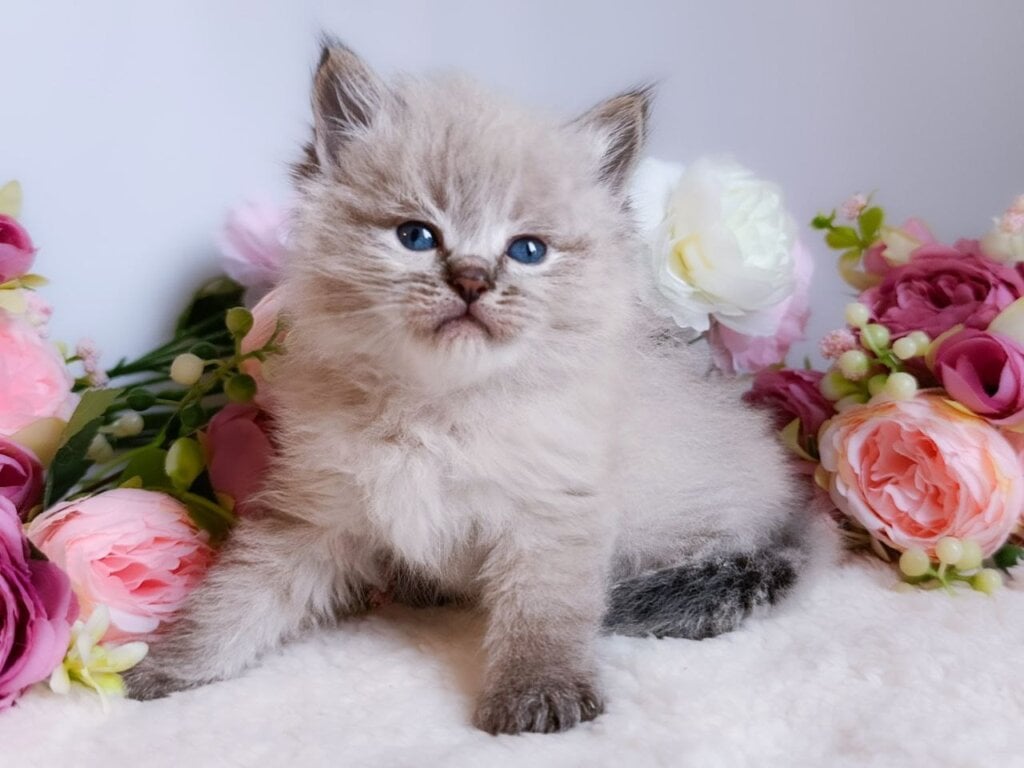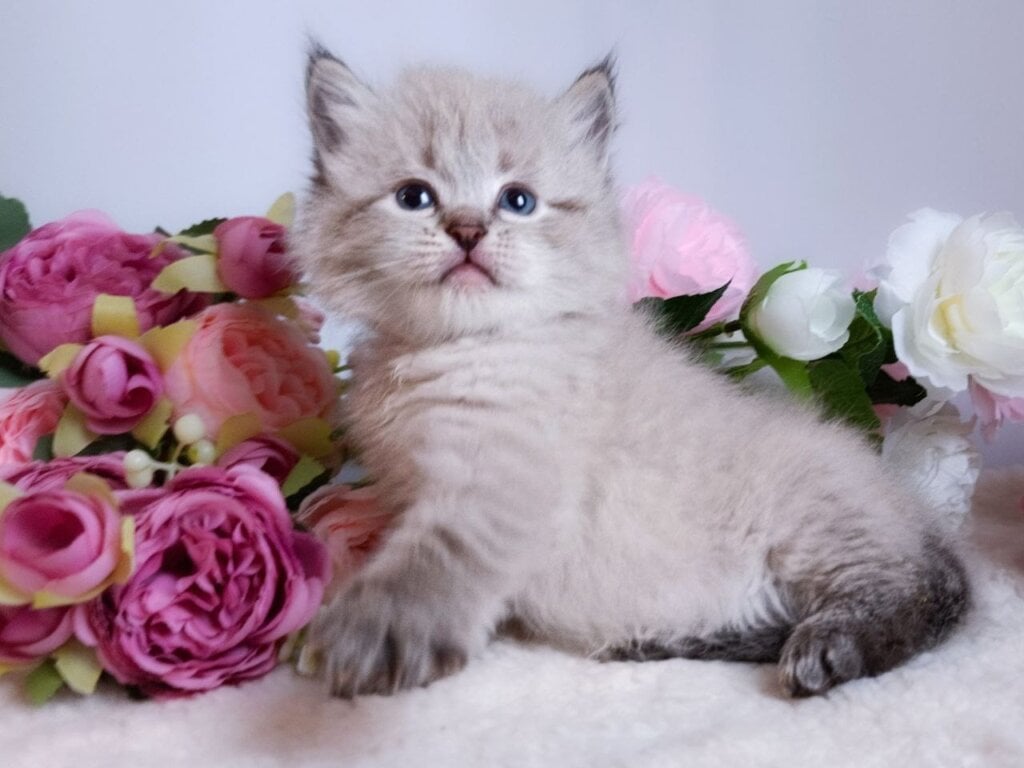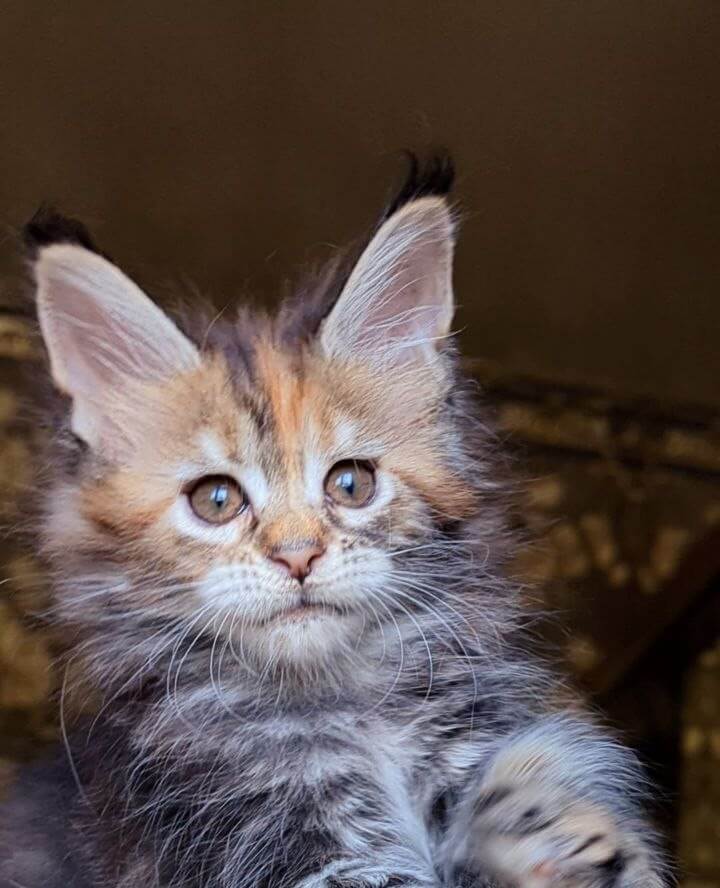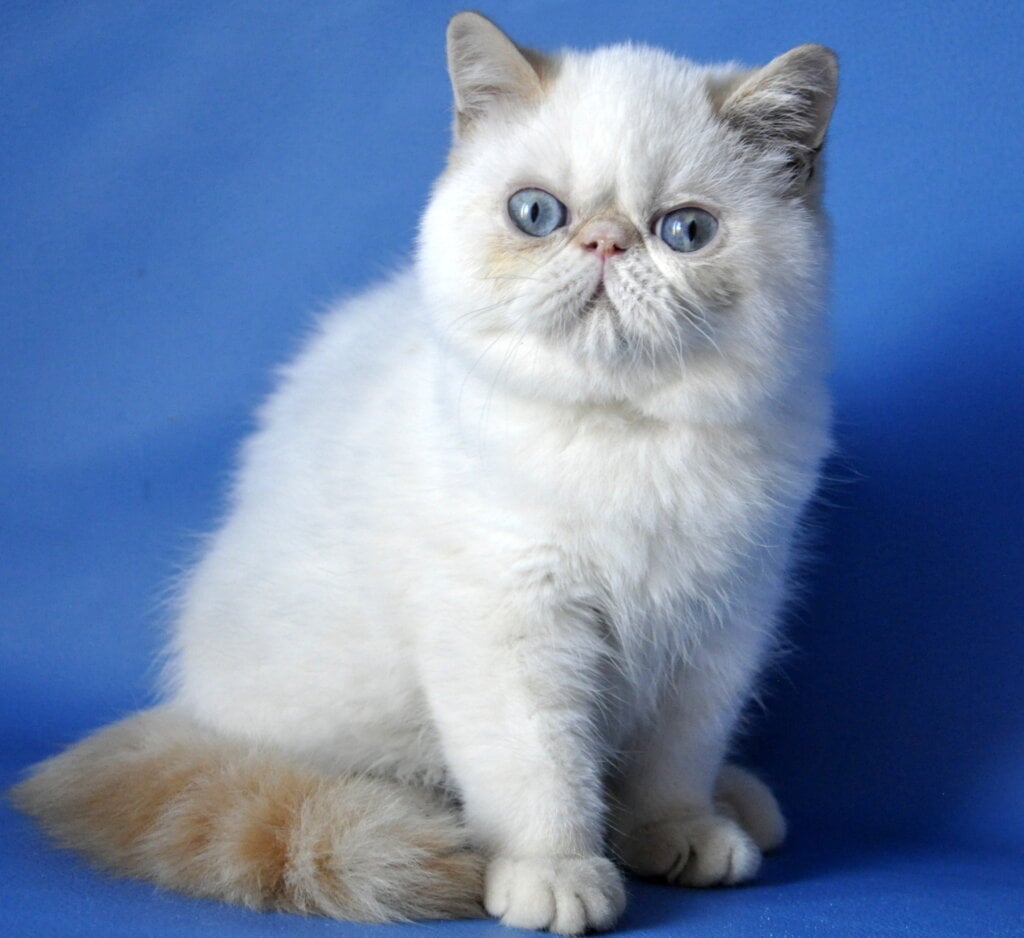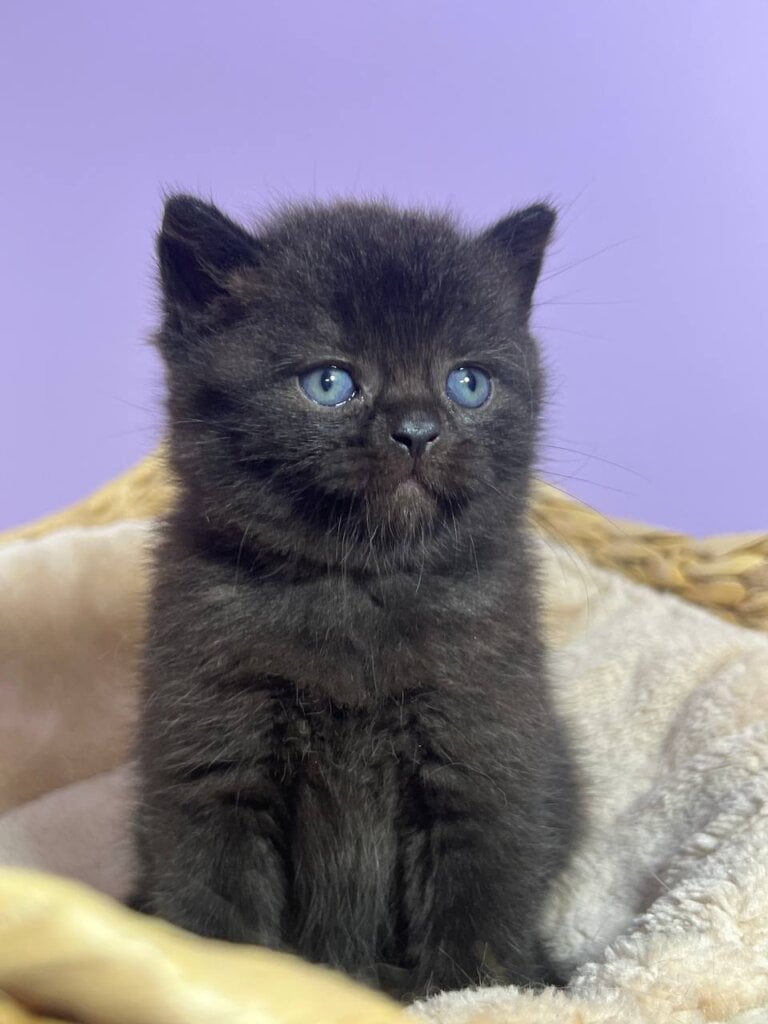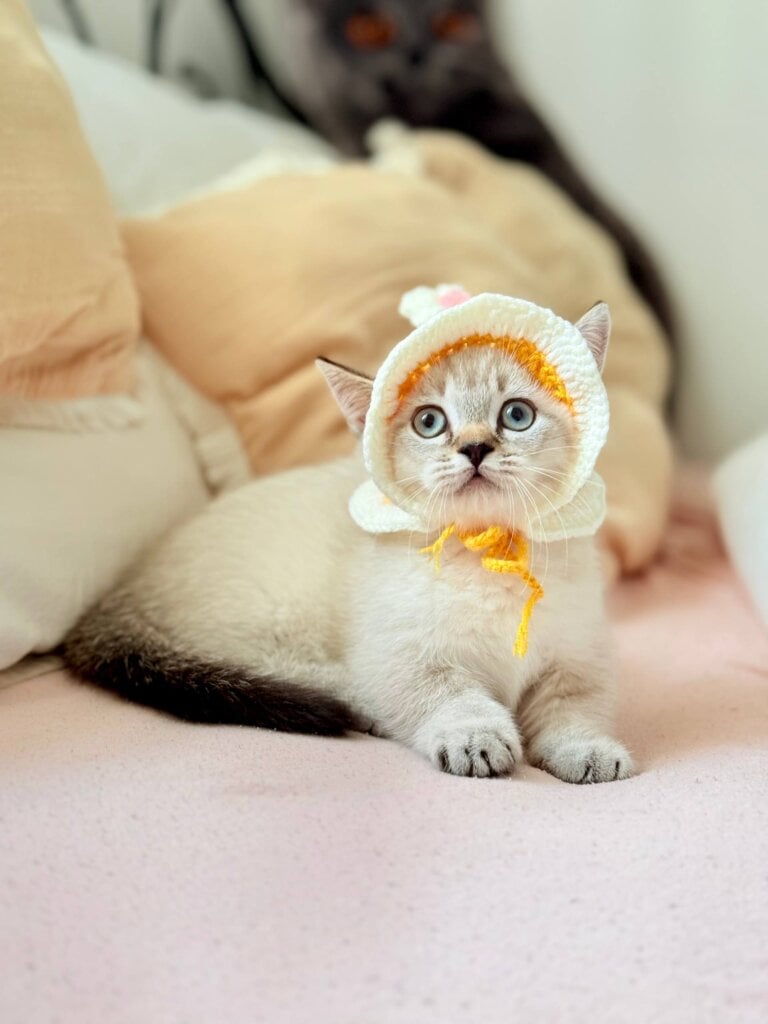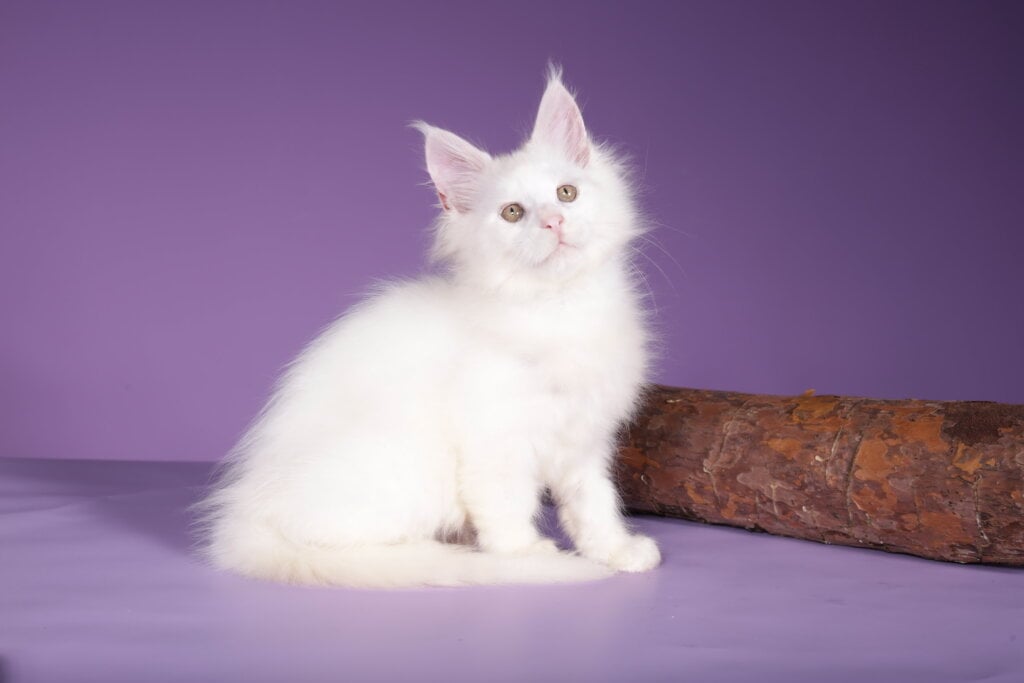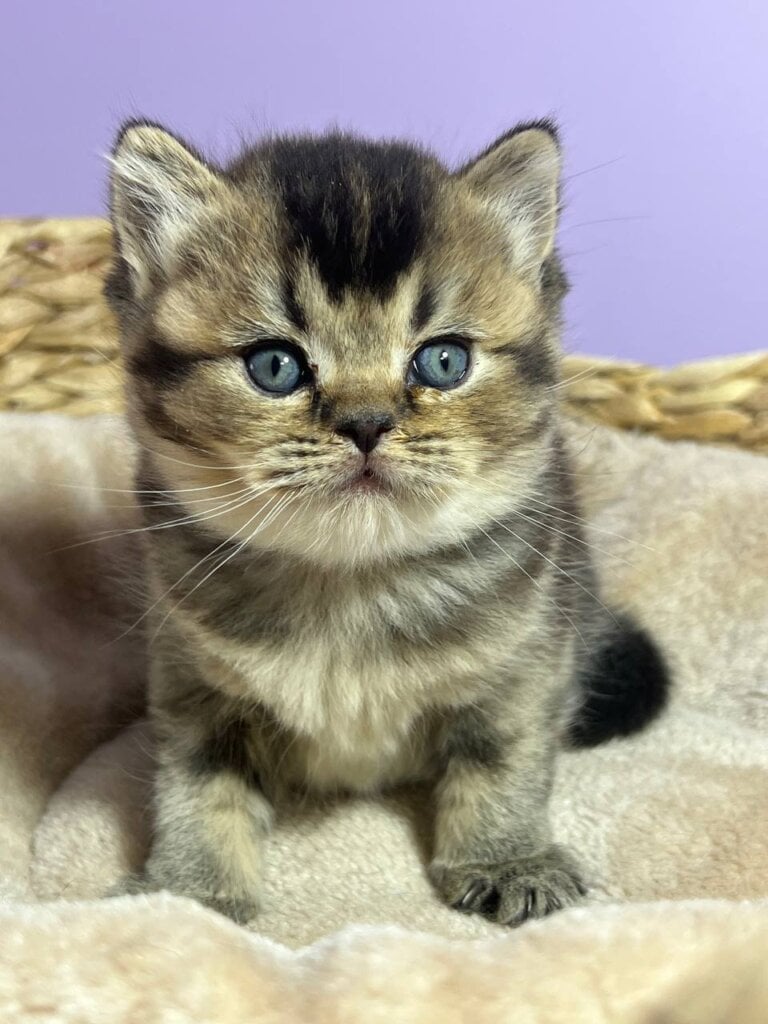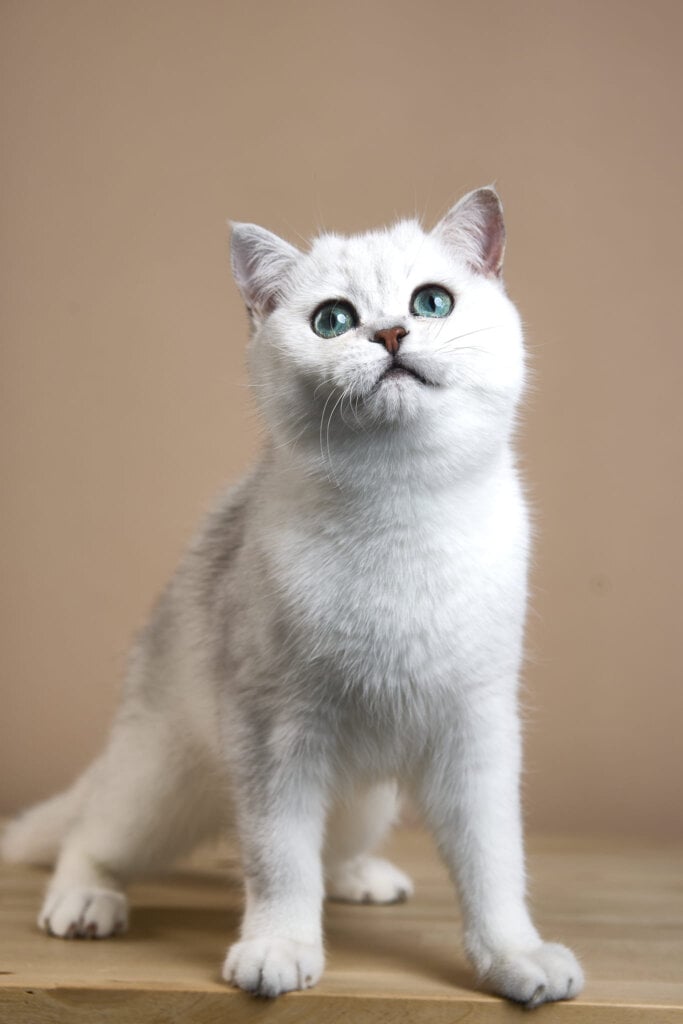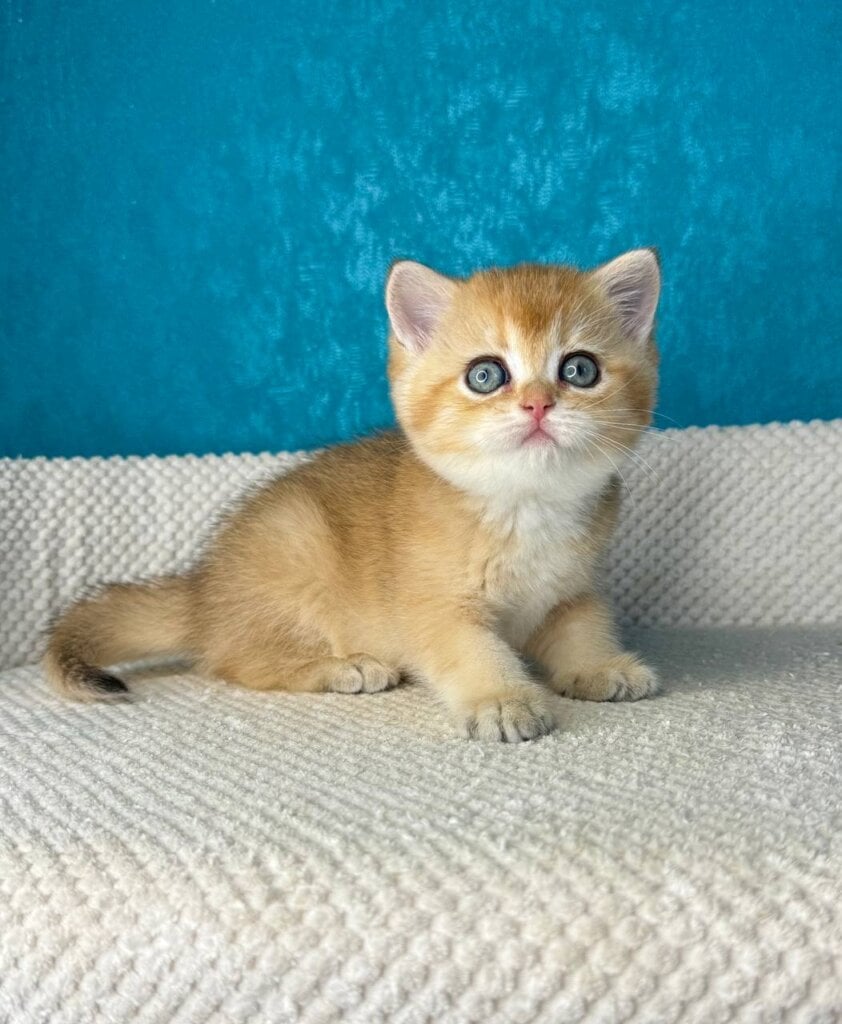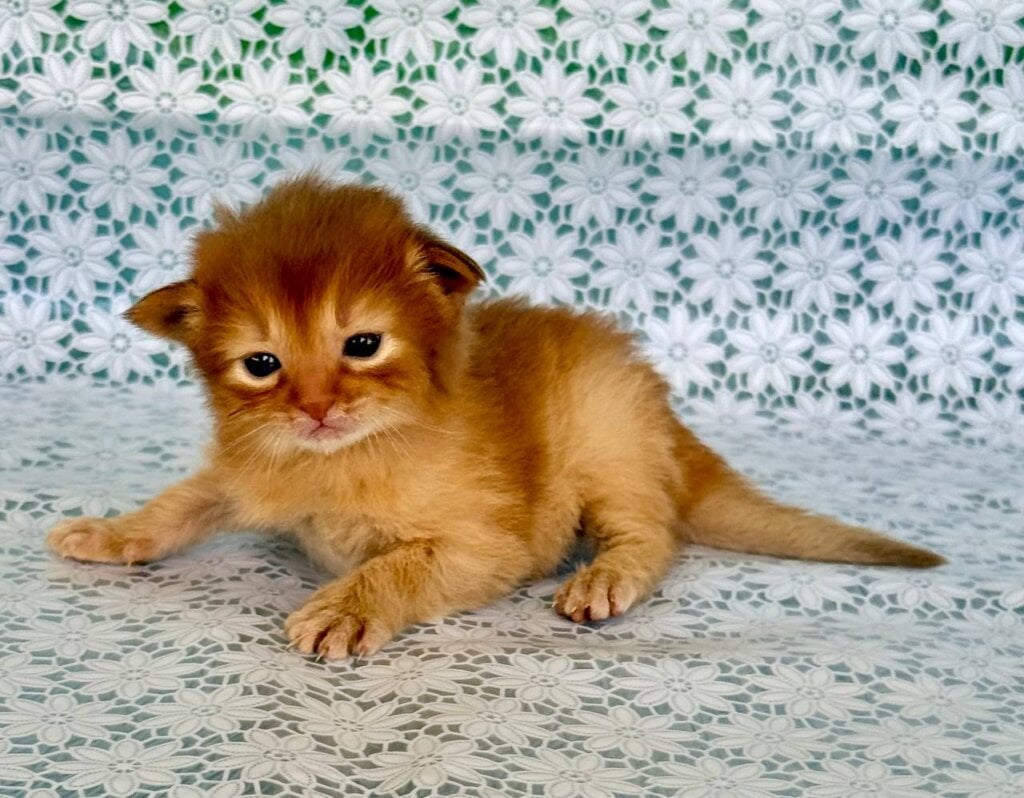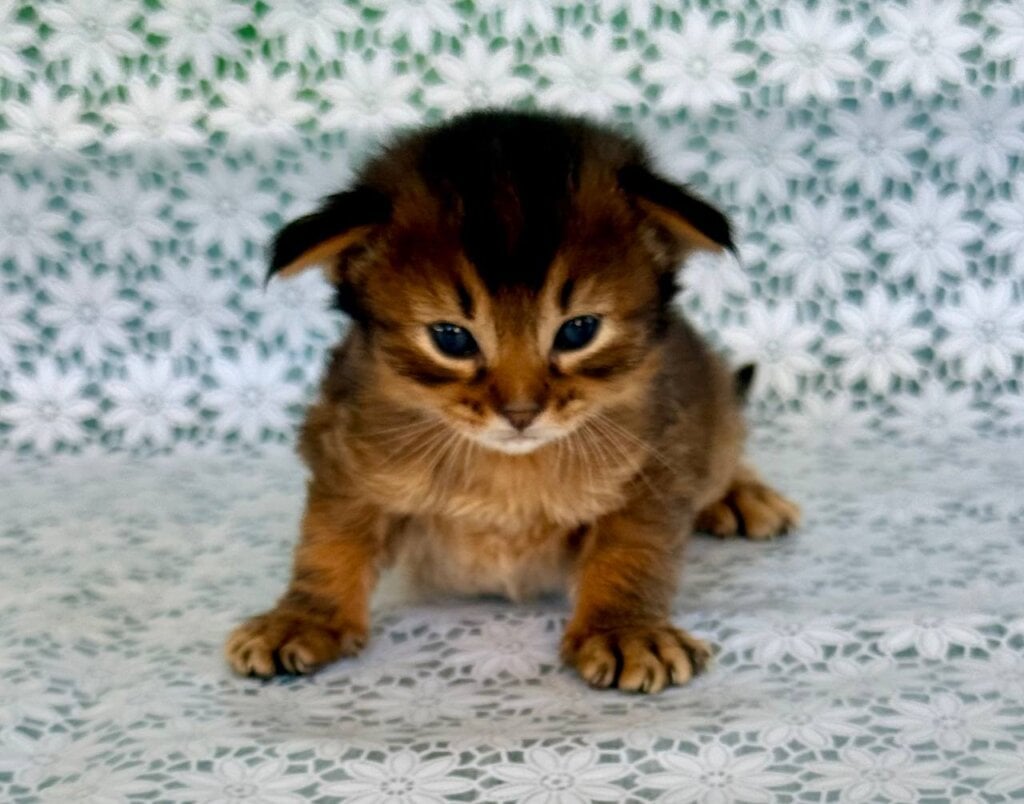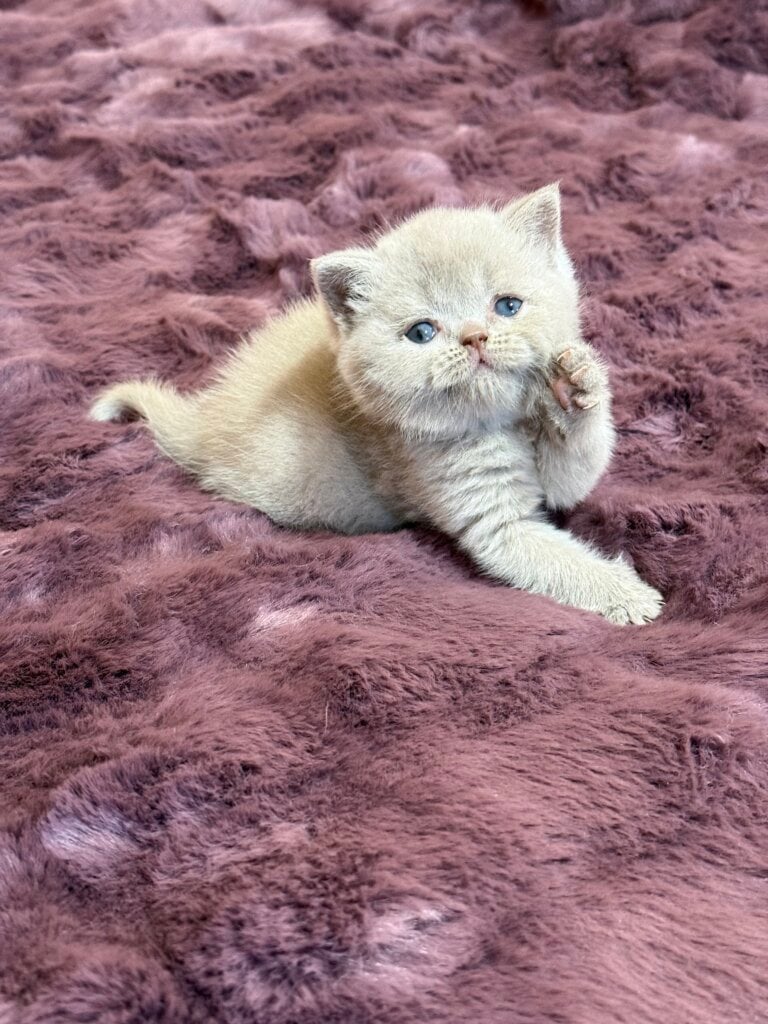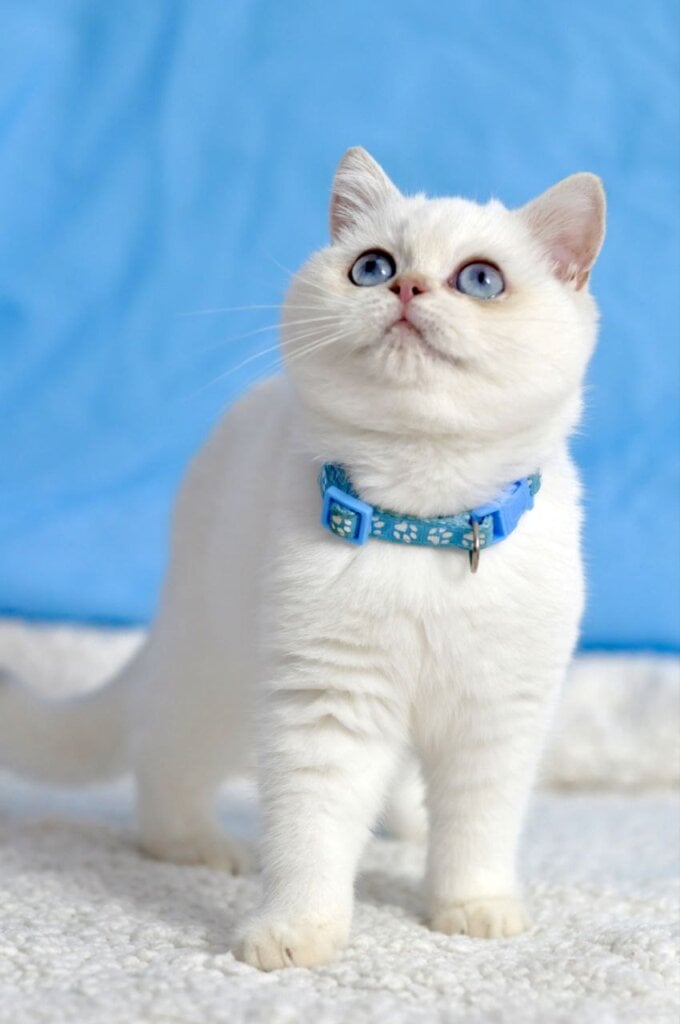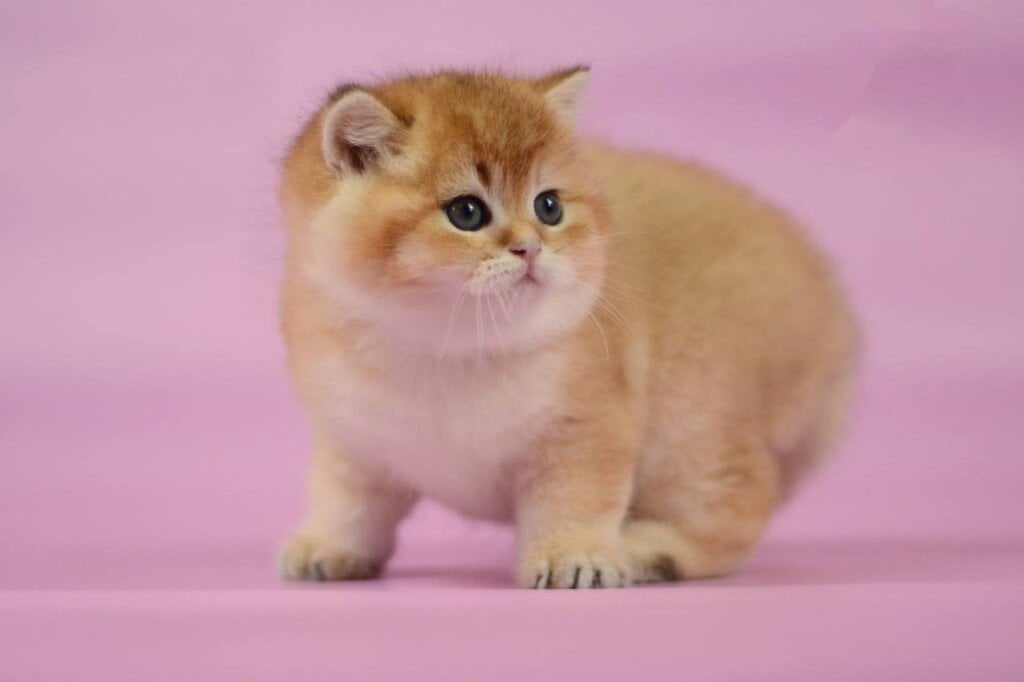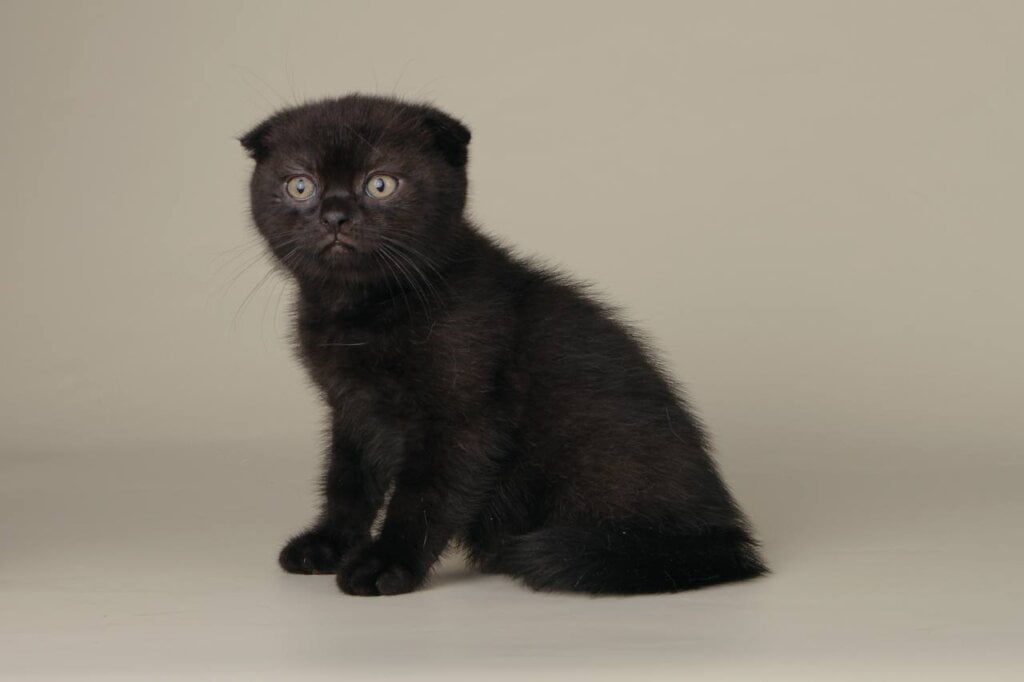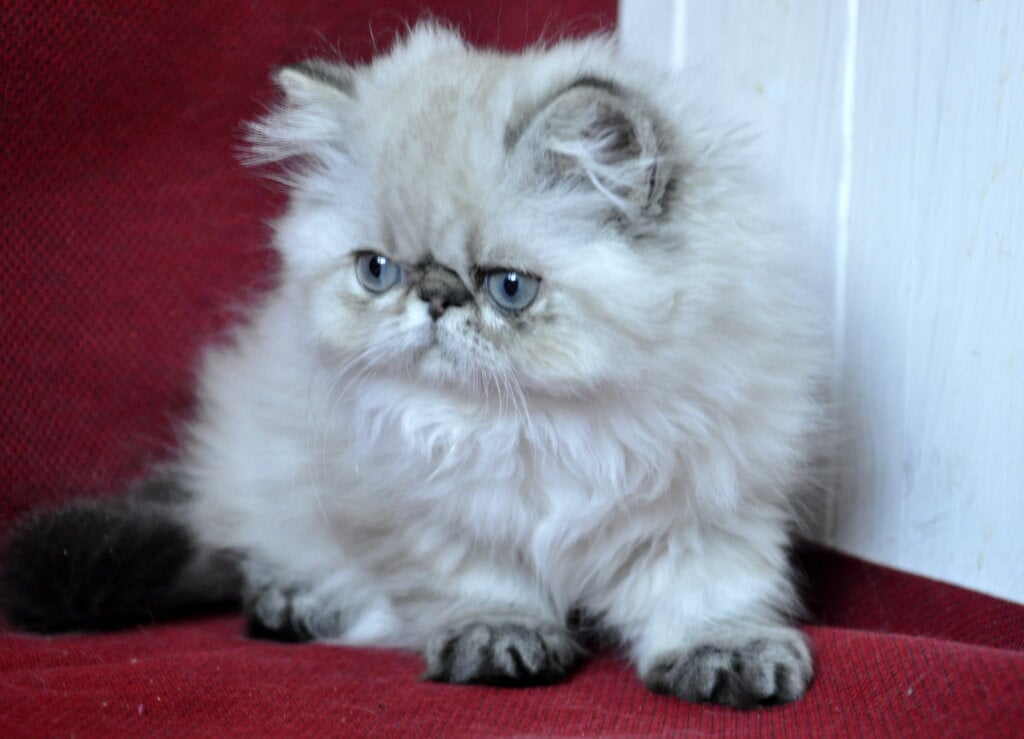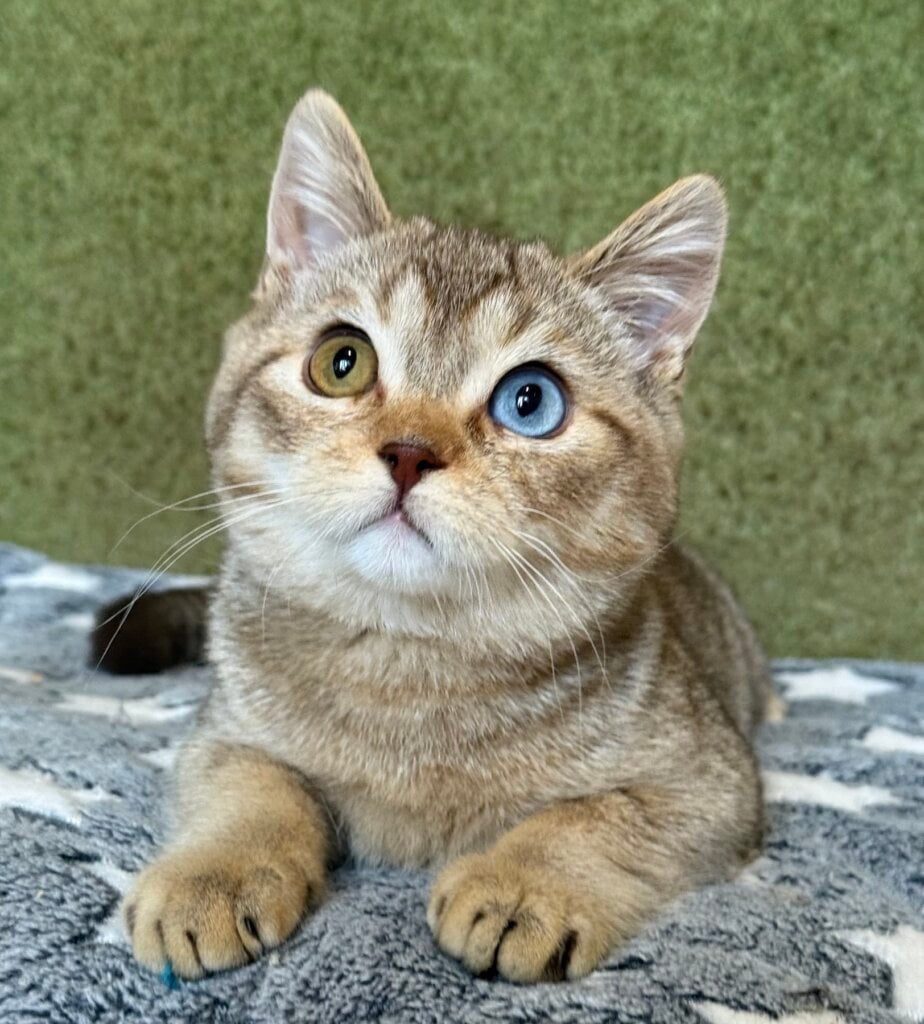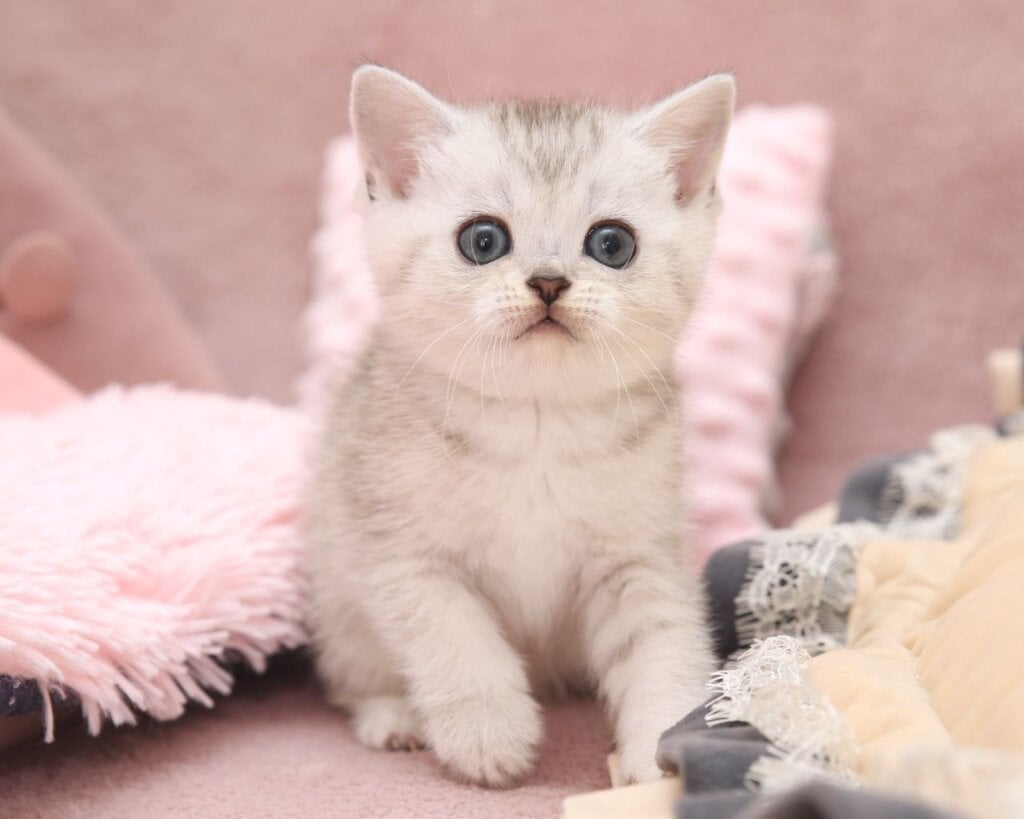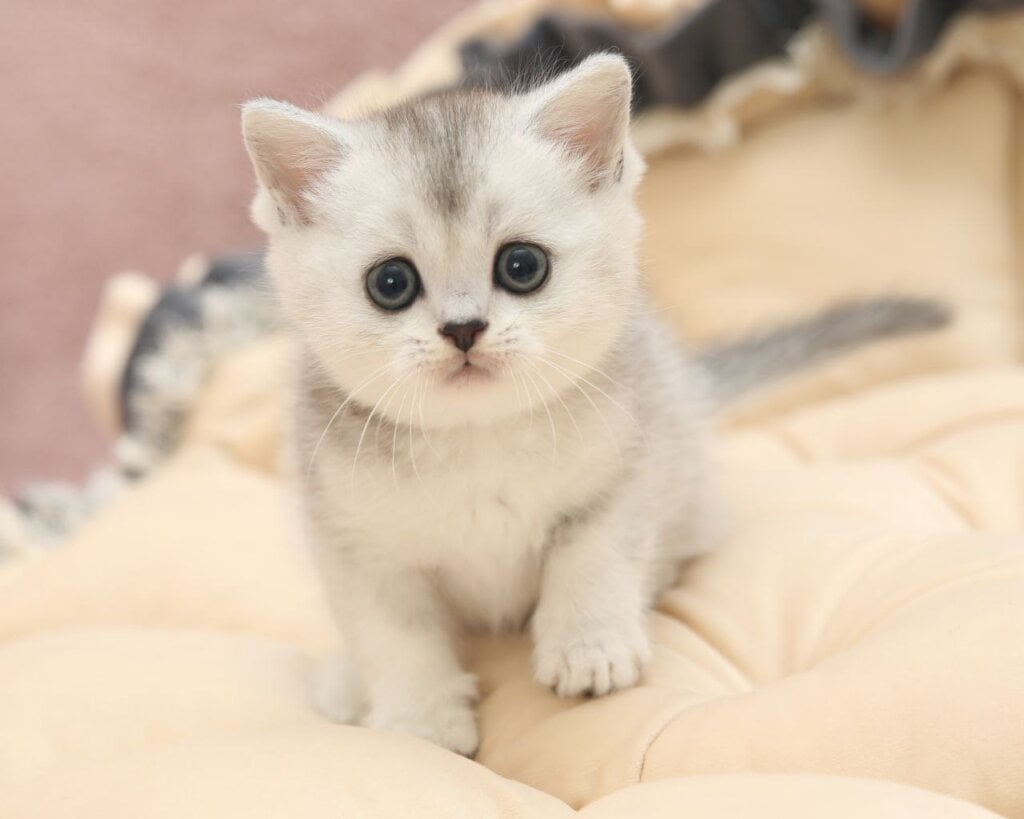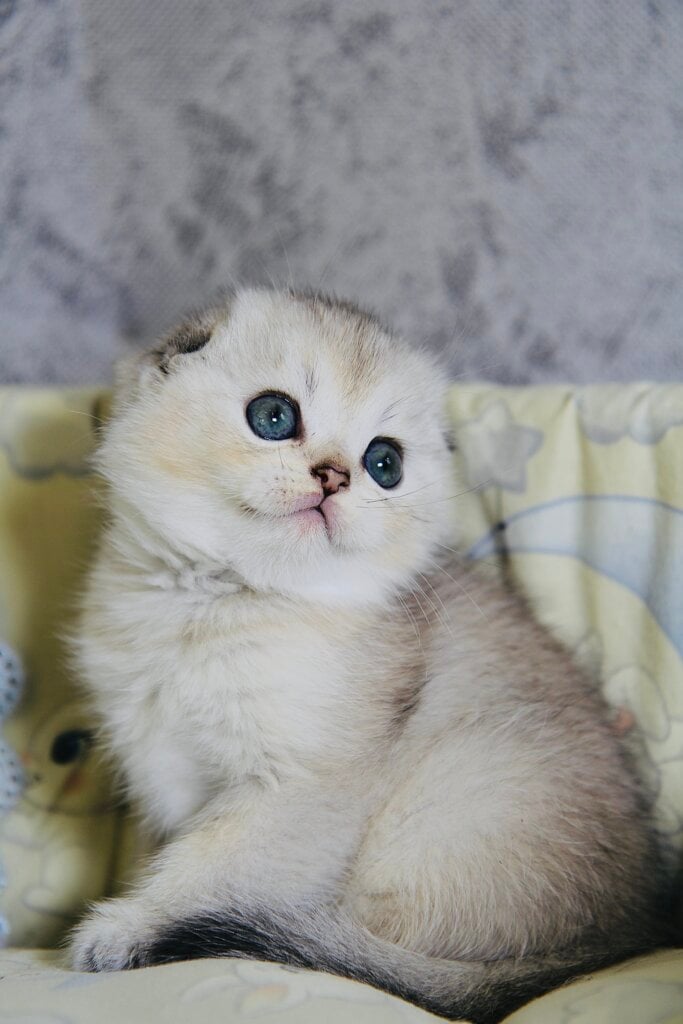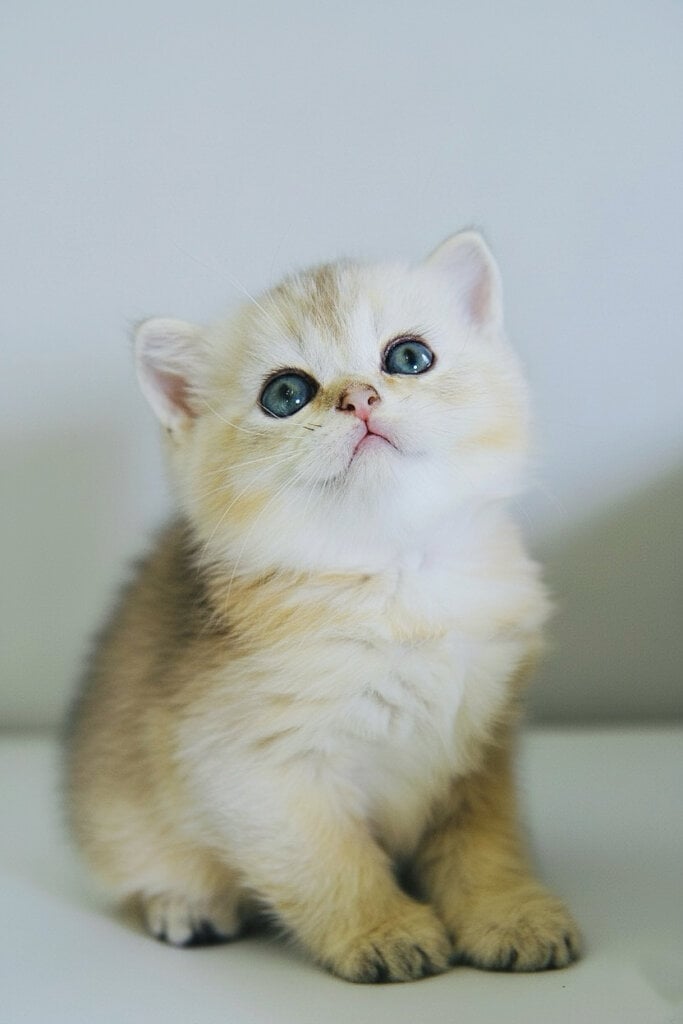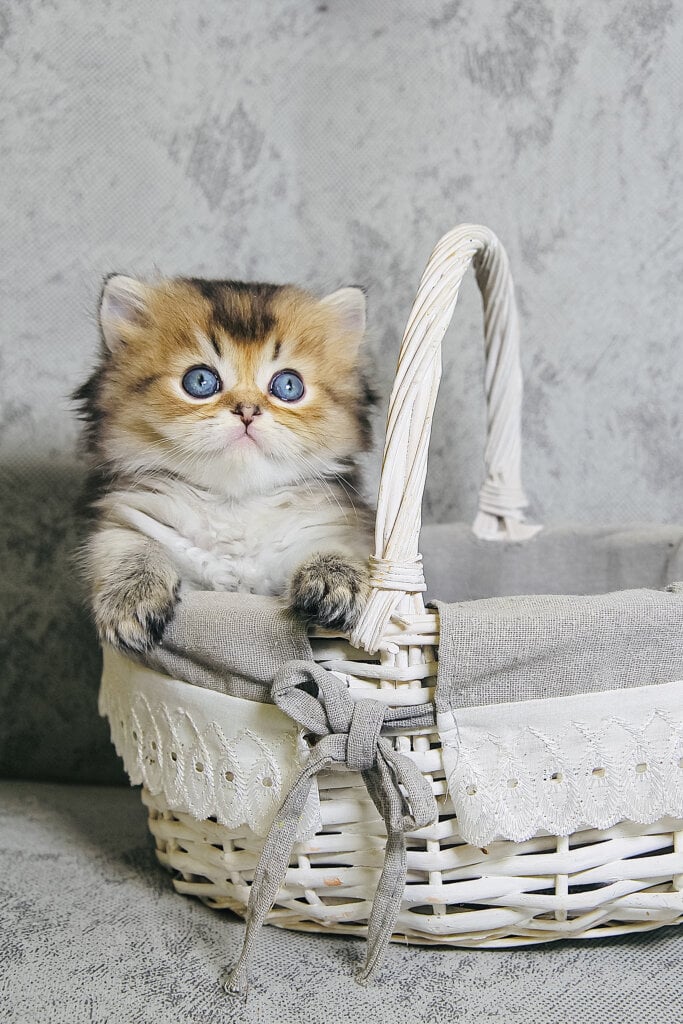This gene can cause cartilage problems not only in their ears but throughout their bodies.
Certain Scottish Folds can develop ear infections or wax build-up more frequently than other breeds.
A lot of breeders do checks to diminish these risks.
To keep them well, regular ear cleaning and vet visits assist a great deal.
The Folded Ear Gene
Scottish Fold cats owe their celebrity look to a unique gene. A gene that literally folds the ear forward by modifying its cartilage. It also does more than alter appearance. It’s also connected to health issues. The folded ear gene is responsible for a condition called osteochondrodysplasia. This is about bones and joints, not just the ears. All Scottish Folds with this gene, regardless of the variant, are affected by this disease.
The Mutation
The folded ear gene is a mutation in the cat’s body that transforms the cartilage. It operates dominantly, meaning that just one copy can transform a cat’s appearance. There are two types of cats with the gene: those with one copy (heterozygous) and those with two (homozygous).
Two-copy cats have way more serious issues. Their bone transformations are visible on x-rays by seven weeks old. Joints stiffen, and he or she could limp or have difficulty moving. Even cats with a single copy aren’t out of the woods. They get issues as well, but frequently later in life and not as severe. Still, pain and arthritis can pop up in the aging cat.
The Skeletal Impact
Osteochondrodysplasia is central to the Scottish Fold’s health condition. The fold ear gene that folds the ears weakens cartilage throughout the body, resulting in thickened, misshapen bones and joints that malfunction.
To be clear, most of these cats end up crippled or arthritic, in some cases even requiring care for life. Even cats that appear fine as kittens can develop pain and swelling as they mature. The problem isn’t only with the back legs and tail. Every cartilaginous joint can be modified.
It’s not an ear problem-it’s a whole body problem. Owners frequently report limping or a stiff walk, and x-rays reveal bone changes which are difficult to repair.
The Ethical Debate
Breeding Scottish Folds has been controversial internationally. The gene’s connection to bone disease, discovered in 2016, transformed the way we view the breed. Some breeders – particularly in Europe – have even ceased breeding Scottish Folds altogether to spare future cats from suffering.
Stopping folded ear cat breeding would eliminate this issue within one generation. Still, lots of fans believe the breed’s appearance is worth it, while others say it’s cruel to the cats. While responsible breeders today emphasize education and health testing, the ethical questions persist.
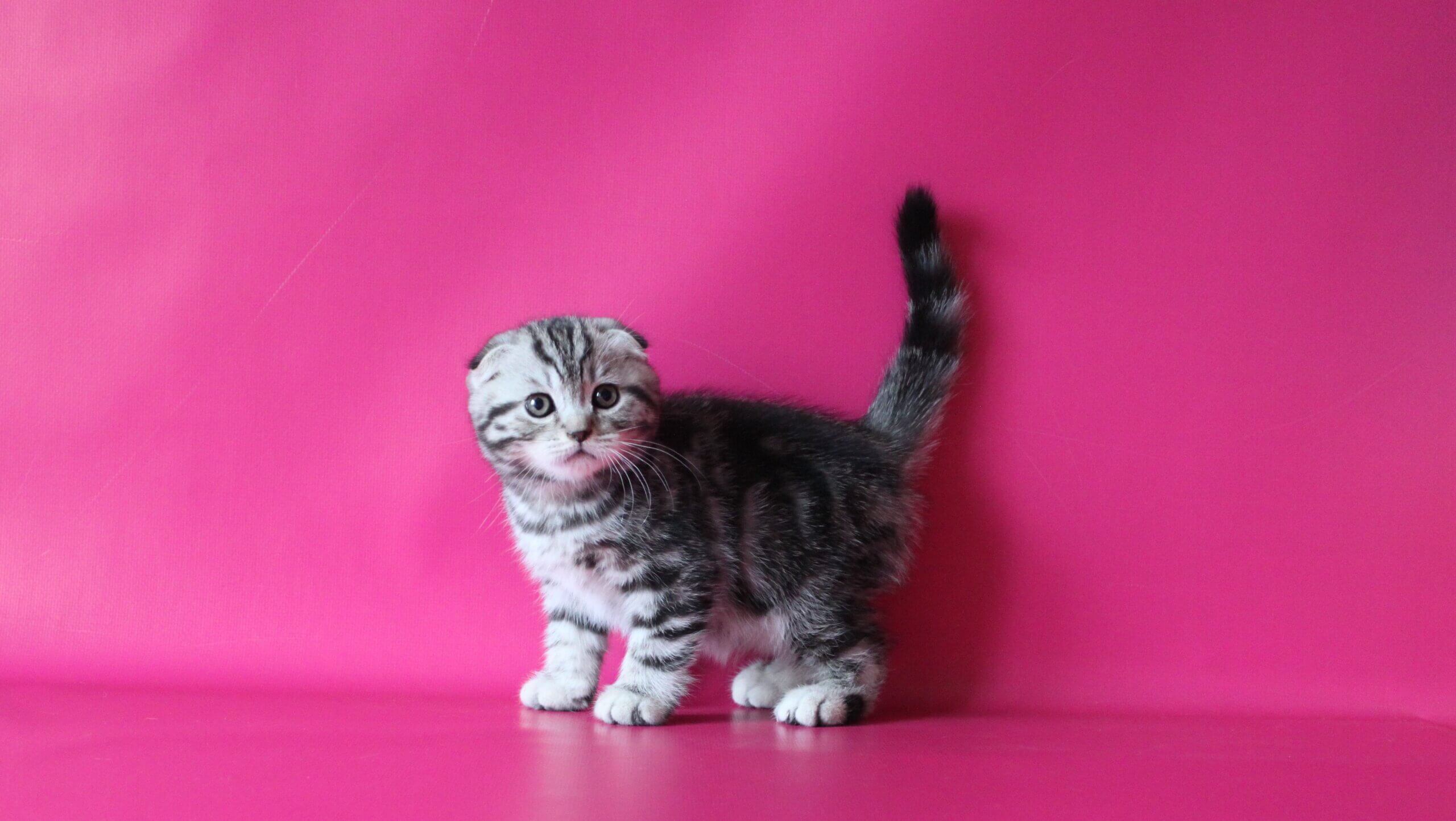
What Ear Problems Affect Scottish Folds?
Scottish Folds are known for their folded ears, which appear adorable but can cause some health issues. Their distinctive ear shape predisposes them to ear problems more so than straight-eared breeds. I wanted to know what these problems are so families can care for their Fold and keep them healthy.
Excessive Wax
Wax accumulates quickly in folded ears. The fold creates a confined area in which wax, dust and even loose hair become trapped. When wax accumulates, it can cut off air and cause the ear to be moist and warm. This is an ideal breeding ground for bacteria.
If you notice brown or yellow wax or if you smell a foul odor, that’s an indication of problems. Routine inspections and cleaning can prevent issues before they begin. Apply with a soft cotton pad or consult your vet for recommendations. Clean ears equal a happier cat and less vet visits!
Chronic Infections
Scottish Folds are more prone to ear infections than other cats since their folded ears trap both moisture and debris. Bacteria and yeast adore this moist, shut-up area. Certain cats develop red, swollen ears with a yellow/black discharge. Some may scratch or shake their heads excessively.
Infections can be painful, and if left untreated, can spread deeper or lead to additional pains. Heterozygous Folds (1 folded gene copy) may experience gentler symptoms and homozygous Folds (2 copies) frequently develop severe, chronic infections. Early detection and treatment of infections will keep your cat comfortable and safe.
Ear infections don’t resolve spontaneously. If your Scottie keeps floundering, consult your vet. They may require medication, or perhaps even a cleaning routine adjustment. Don’t delay–severe infections can cause bigger health risks.
Persistent Mites
Ear mites are incredibly small bugs that love to take up residence in Scottish Fold ears. Their folded shape facilitates mites’ ability to hide and makes it difficult for owners to notice them. Mites cause itching, scabbing and black debris that resembles coffee grounds.
Cats with mites will shake their heads and scratch until their ears are bleeding. Mites can spread between cats, so if one pet has them – check them all! Treatment for mites is vet drops and clean ears! If neglected, mites can cause infections or hearing loss.
Narrowed Canals
Folded ears often mean narrow ear canals. This makes it difficult for air to circulate and wax to escape. A tight canal captures moisture and prevents dirt from being easily washed away. Certain cats are born this way, and others develop narrow canals after frequent infections.
Vets can check ear canal size during exams. If the ear canal is tiny, your vet might recommend special care or cleaning more frequently. Narrow canals can increase infection risk and block sound absorption affecting your cat’s hearing.
Potential Deafness
Others go deaf due to their distinct ear design or from neglected infections. Deafness can be partial or total and it can deteriorate over time. Cats might fail to react to noises or appear ‘spaced out’.
Deafness occurs more in homozygous Scottish Folds, who suffer from other health concerns related to the folded gene.
Recognizing Distress Signals
Scottish Folds have always been adored for their cute folded ears, yet this unique trait can be linked to health issues, notably cartilage and joint diseases. Catching distress signals early can assist you in supporting your cat’s comfort and well-being.
Behavioral Clues
Scottish Fold cats can be playful and curious, so these alterations in their routine should grab your notice. If your cat is hiding more, less playful, or more withdrawn, these may be the quiet indicators that your kitty is feeling unwell. Others might become more irritable or shun contact, particularly if hurting.
Cats who are hurting often withdraw socially and this is particularly true with Scottish Folds who have joint or ear problems. Notice any deviations from normal behavior, like missing favorite napsites or not meeting you at the door. These little changes generally indicate that something’s amiss.
A more blatant indicator is refusal to leap up on something or ascend the stairs. Scottish Folds typically love to wander, so pausing or refusing to do things they once loved can indicate joint pain. If your cat limps after a nap or walks with a stiff gait, these are clear indicators they are in pain.
Osteochondrodysplasia, a genetic condition in Scottish Folds, could make cats lethargic due to pain. Remember, every cat’s pain threshold is different, meaning that some might exhibit mild behavior changes, while others will cease to play completely.
Physical Symptoms
Examine your Scottish Fold’s body for indications of distress or inflammation, particularly near the joints. Deformed or enlarged joints may be a sign of osteochondrodysplasia, which involves abnormal cartilage and bone growth. You might observe that your cat flinches or pulls away when you touch it in specific spots.
This reluctance is an immediate indicator of distress. Abnormal posture is another physical symptom. Your Scottish Fold may carry its body rigidly or hold its legs in strange positions to prevent pain. If you notice your cat limping or favoring a paw, joint pain may be to blame.
Certain cats could sleep more and roam less, and some may even groom themselves less, particularly around sore areas. These warning signs must not be overlooked because early intervention can enhance quality of life.
Veterinary Diagnosis Process
Early detection of ear and joint issues in Scottish Folds helps families provide optimal care. Their folded ear is a cartilage defect and this exact same change can elicit health issues that extend beyond the ears. Vets employ a combination of physical examinations and high-tech equipment to identify and monitor these problems, as they are frequently associated with Scottish Fold Osteochondrodysplasia-a hereditary bone and cartilage disorder exclusive to this breed.
Physical Examination
A vet begins by giving the cat a physical. They examine ear conformation, the cat’s gait and for any pain in the limbs or back. The ears of a Scottish Fold kitten are invariably straight at birth and start to fold at the age of three to four weeks, caused by a defect in the cartilage.
That same cartilage problem can manifest in other areas too. Many of these two-mutation-copy cats will at least exhibit obvious symptoms-rigid limbs, strange stance, or achy joints, even at just a few months of age. A thorough physical exam frequently discovers hard, rigid tails and swollen joints.
These initial hints assist a vet in determining whether further tests are necessary.
Diagnostic Imaging
Imaging, of course, is the gold standard for a bona fide diagnosis. Radiographs (x-rays) are usually the initial phase. In young kittens – sometimes as early as seven weeks – x-rays can demonstrate lesions and bone changes, particularly in cats with two copies of the gene.
If a vet observes thickened joints or aberrant bone growth on these films, it supports the diagnosis. CT or MRI scans reveal even more detail, allowing vets to identify cartilage erosion, subtle spinal issues, or hidden joint damage.
With these scans, the vet can observe how extensive or serious the disease may be. Imaging is crucial for treatment planning and monitoring progression.
Scottish Fold Osteochondrodysplasia isn’t limited to the ears. The cartilage and bone changes can manifest in the spine, legs and tail. Certain cats may struggle to walk, leap less, or appear stiff.
Which is why nabbing these signs with imaging early makes a real difference for the cat’s comfort and long-term health.
Genetic Testing
A genetic test is the only way to know for sure if your Scottish Fold has the mutated gene. With just a blood or cheek swab, labs can determine if the cat carries zero, one or two copies.
This is important, because cats with the two copies almost always develop the worst symptoms-crippling arthritis and bone pain early in life. Even heterozygotes display mild to moderate dysfunction.
Most breeders use these tests now to ensure they don’t mate two carriers, which helps avoid the worst of it. For families, genetic testing translates to less guess work and more peace of mind when selecting a kitten.
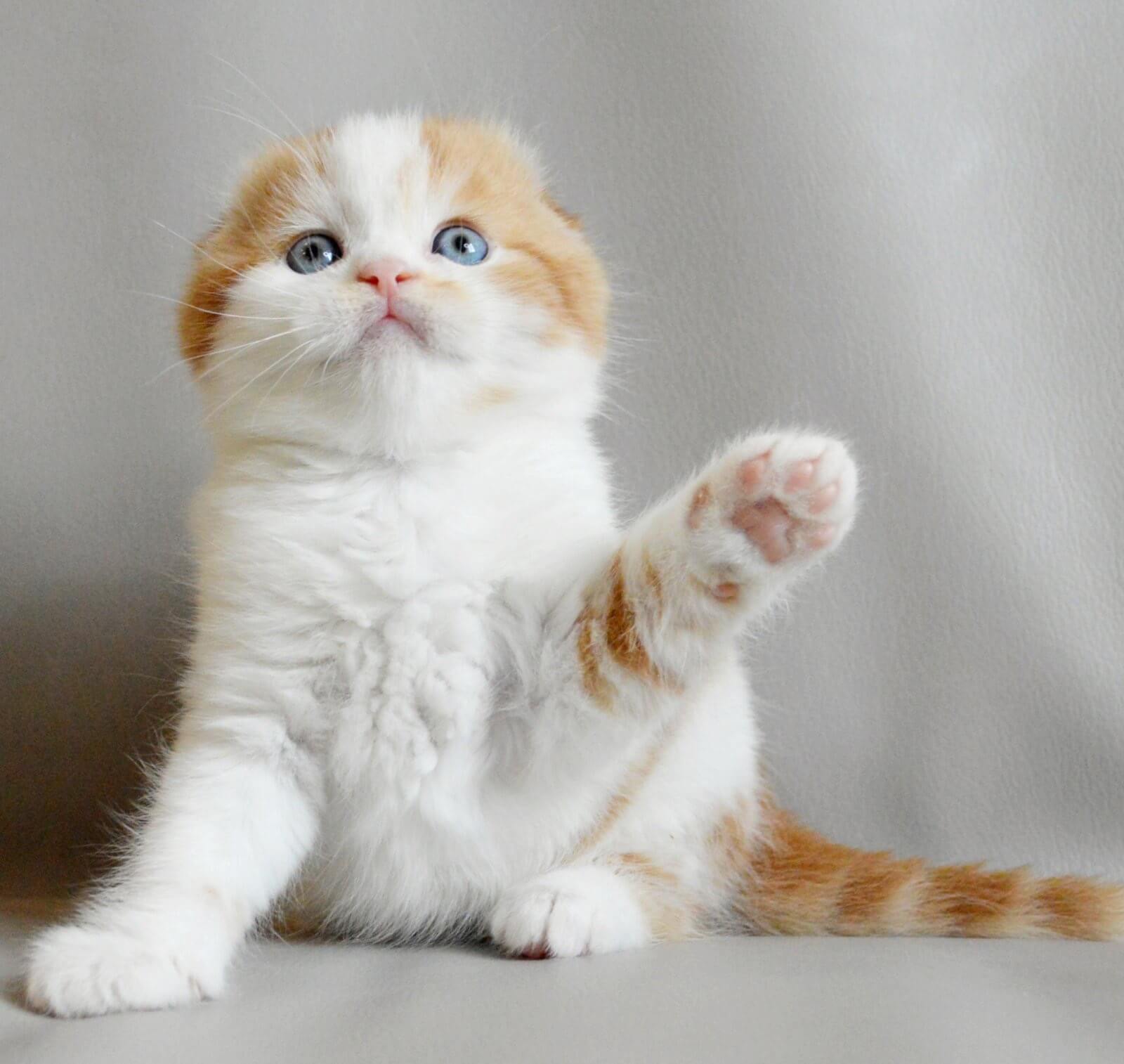
Managing Your Cat’s Ear Health
Scottish Fold cats’ ears got that signature fold, giving them their classic appearance, but this makes them prone to specific ear health complications. Their ear shape makes them more susceptible to wax build up, infections and even a genetic condition called osteochondrodysplasia that can give them issues in their ears and joints.
Looking after their ears is crucial to maintaining their health and happiness.
Routine Cleaning
Regular ear cleaning isn’t just helpful-it’s necessary for Scottish Folds. Their folded ear shape can trap dirt and moisture, so wax and debris accumulates more quickly than in cats with straight ears. If unmanaged, this can result in ear infections or pain.
Cleaning your cat’s ears every two weeks is a good baseline, though some cats will need more frequent cleaning, particularly if they have oily skin or prior ear problems. Always apply a pet-safe ear cleaner and soft cotton pads.
Skip the Q-tips – they’ll just push gunk further back or injure the ear canal. If your cat pulls away, appears to be in pain, or shakes their head continuously, this could indicate that there is an existing issue.
Medical Treatments
Scottish Fold cats are predisposed to osteochondrodysplasia, a genetic disease that impacts cartilage and bone development. This disorder doesn’t only cause those stereotypical folded ears-it can result in pain, stiffness, and joint swelling.
If your cat is limping or having difficulty moving, get him to a vet fast. Ear infections can arise from wax, allergies, or mites. Treatment typically involves prescription drops, antibiotics, or occasionally anti-inflammatory drugs.
Ear mites require one kind of medication and bacterial or yeast infections necessitate others. Keep up with regular vet visits-at least once a year, but more if your cat has chronic issues. The sooner you catch it, the easier it is to treat and keep your cat comfortable.
Lifestyle Adjustments
4 Ways to Help your Scottish Fold Fend Off Ear Problems at Home. Try to maintain a clean, dust-free environment in their immediate surroundings to reduce potential allergens.
Use unscented litter; strong smells can irritate their ears and nose. Feed them a diet high in omega-3 fatty acids-this promotes skin and joint health, which is useful for cats susceptible to osteochondrodysplasia.
Establish a grooming routine, monitoring for redness, swelling, or discharge. If your feline frequents the outdoors, remember to examine their ears for ticks or grime upon reentry.
Easy measures like these can result in less ear trouble later on and a more content kitty.
Beyond the Ears
Sure, Scottish Fold cats have those adorable ears, but the health issues associated with this breed go far beyond ear shape. Their trademark earlobes result from a genetic mutation that impacts cartilage across the entire body, not just the ears. This condition, known as osteochondrodysplasia, can lead to pain, mobility difficulties, and life-limiting complications.
Joint Pain
Joint pain is a huge risk for Scottish Folds. That very gene responsible for their fold in the ear impacts cartilage in their legs, spine, and tail. For some cats, pain makes an early appearance, as soon as 7 weeks old.
X-rays tend to exhibit joint changes prior to your detecting a limp. In Scottish Fold homes, you may observe a lame kitten that doesn’t quite want to jump or begins walking stiffly. For homozygous cats, the pain can be even worse. Their joints can get thick and hard with arthritis and bony lumps that make every step hurt.
Unfortunately, others eventually require potent pain management or, at their worst, euthanasia if pain can’t be controlled. Owners sometimes have to provide additional day-to-day support, such as soft bedding or ramps to assist their cat in navigating.
Mobility Issues
Mobility is another huge challenge. Scottish Folds may begin to lose their love for play or have difficulty climbing or jumping. Over time, their legs can become stiff and their gait may appear strange or unbalanced.
Most cats develop short, stiff legs which impede their mobility. These shifts not only make life less enjoyable, they can inflict long-term harm. Some will require assistance with grooming or even fundamentals such as making it to the litter box.
The severity of the trouble can differ greatly. Some felines may require minimal assistance, whereas others will require continuous assistance to mobilize or lay down. In worst cases, surgery may have been required to fuse joints or remove painful bone growths. Some cats have been saved with radiation, but that’s not always available.
Tail Stiffness
Tail issues are prevalent in Scottish Folds. Their tails are sometimes stout, rigid and cumbersome. Some cats don’t like tail touch because it hurts.
You may see they keep their tail low or don’t wag it when content. This isn’t just a surface issue. A stiff tail can be a sign of increased joint or bone trouble elsewhere in the body.
Sometimes tail changes are the earliest signs of osteochondrodysplasia, before leg or spine problems begin. The tail will sometimes be tender as well, making regular play or petting painful.


